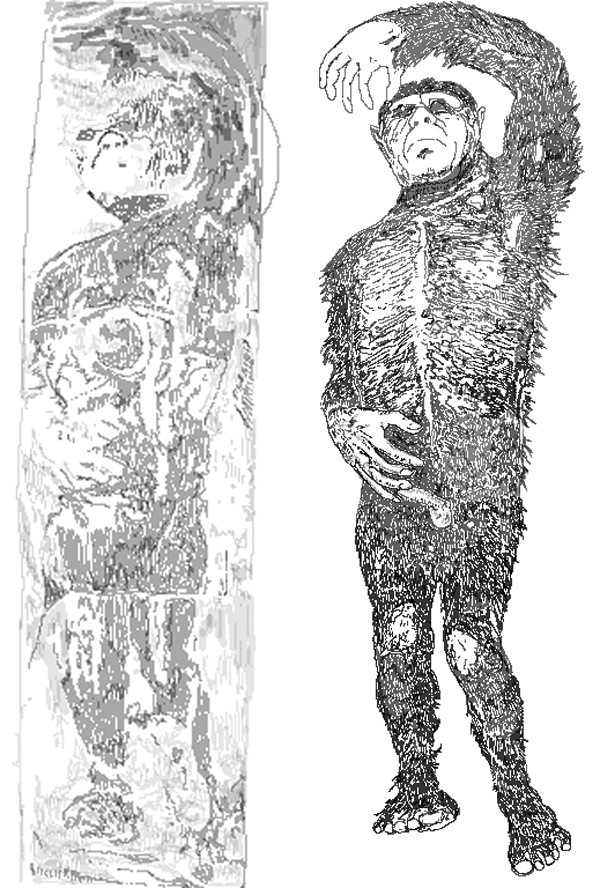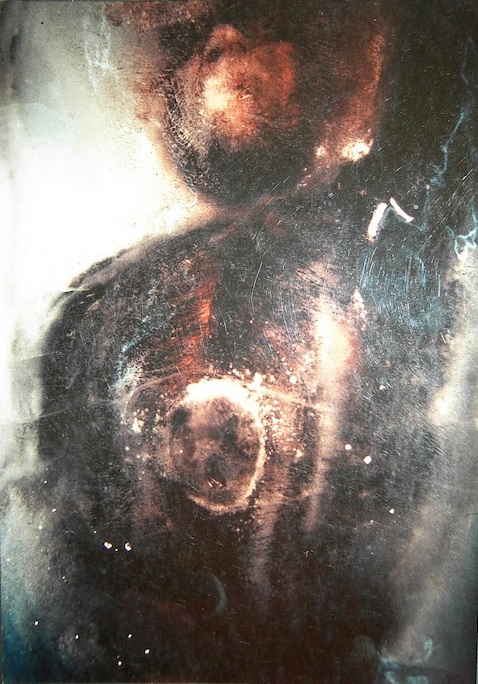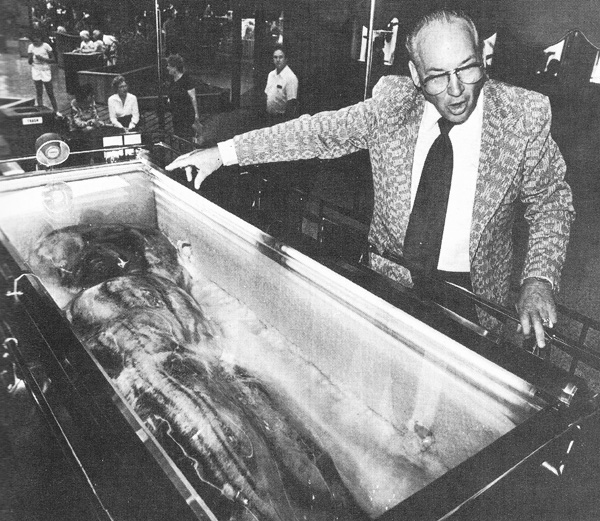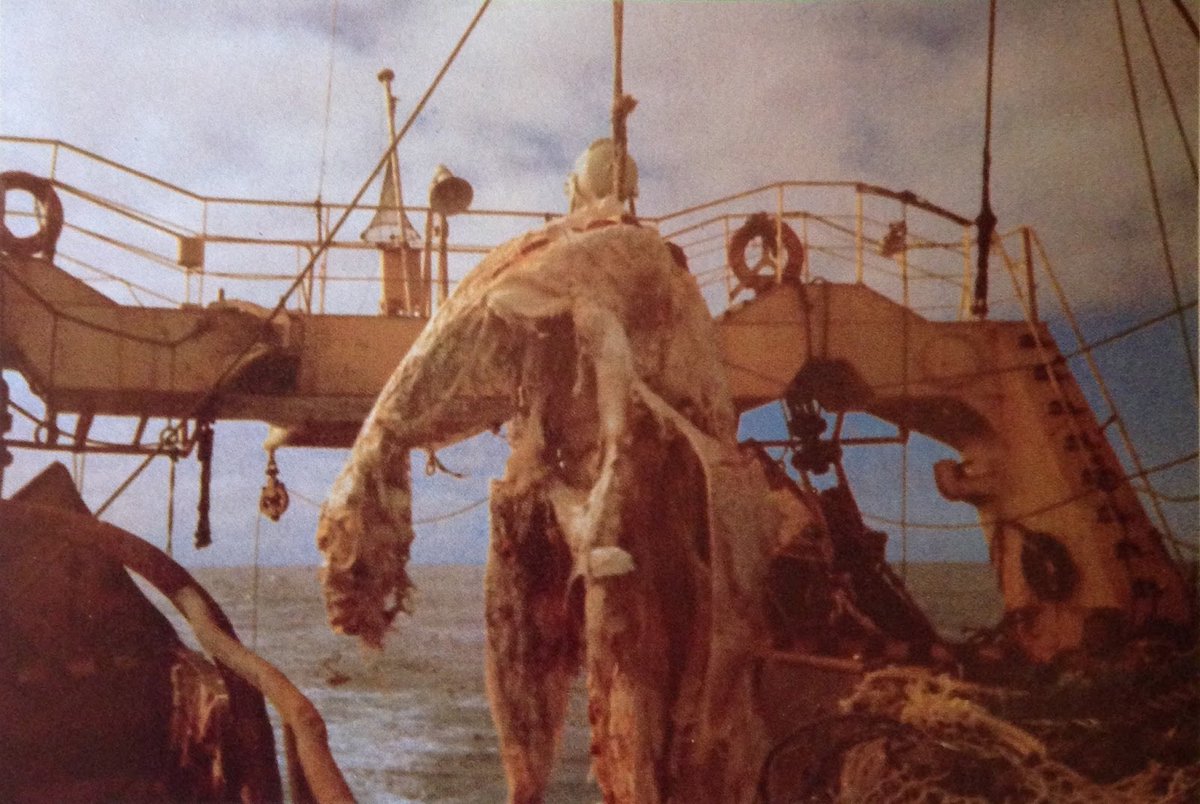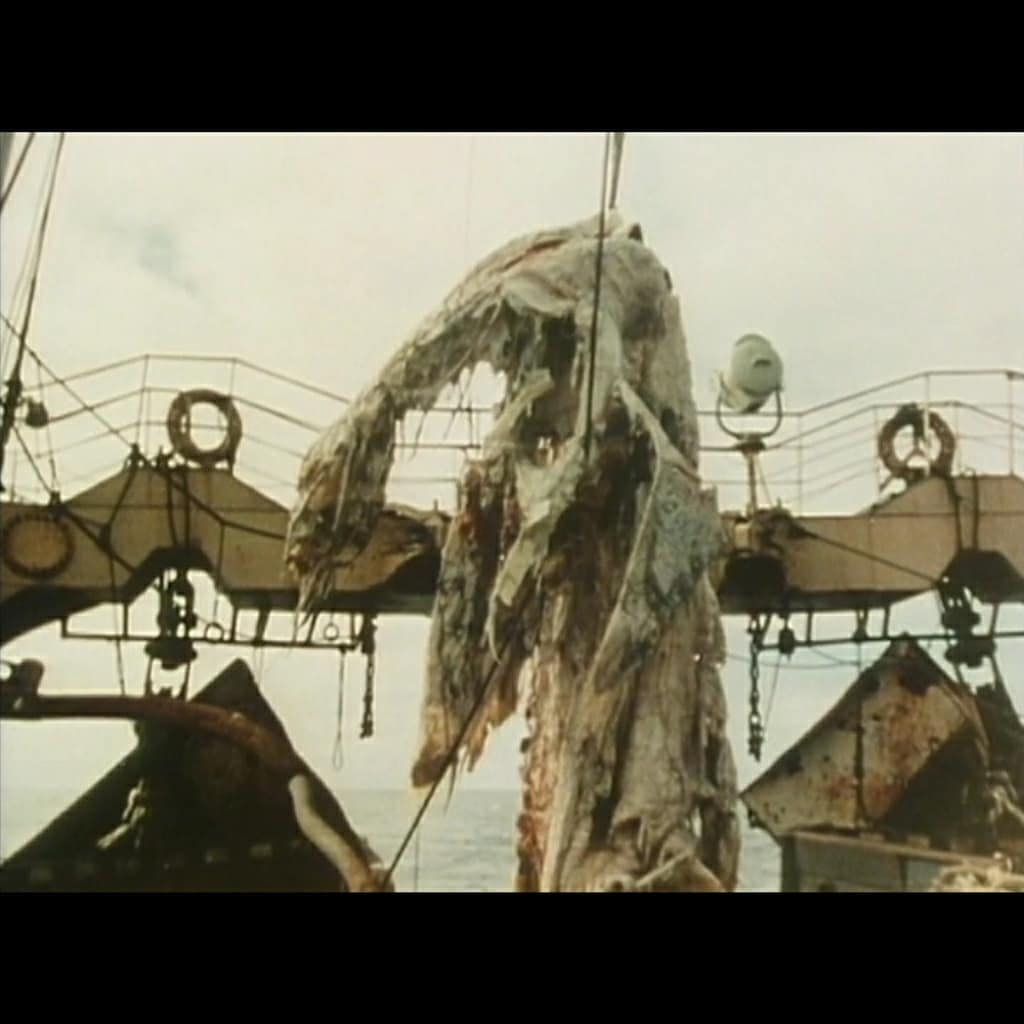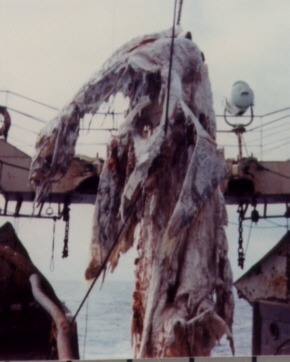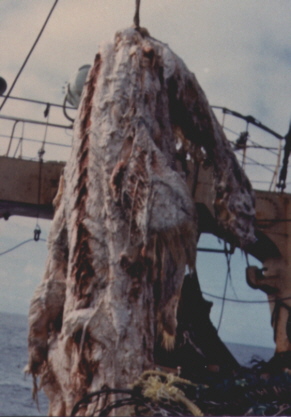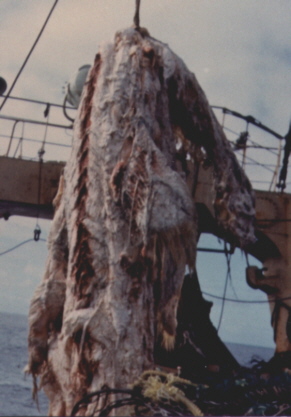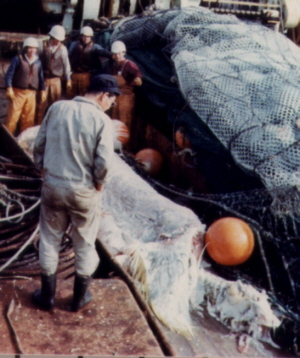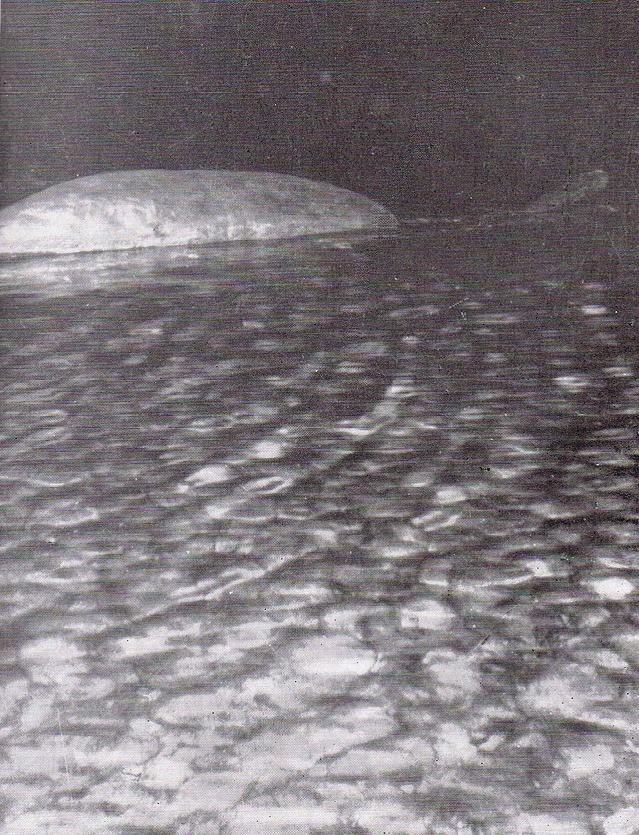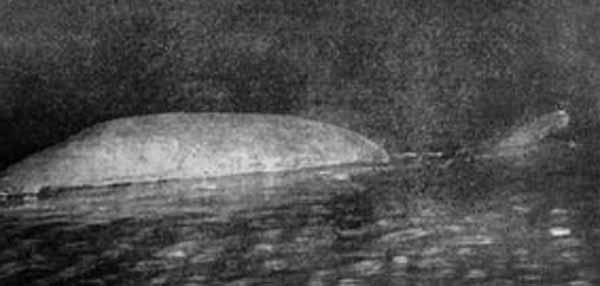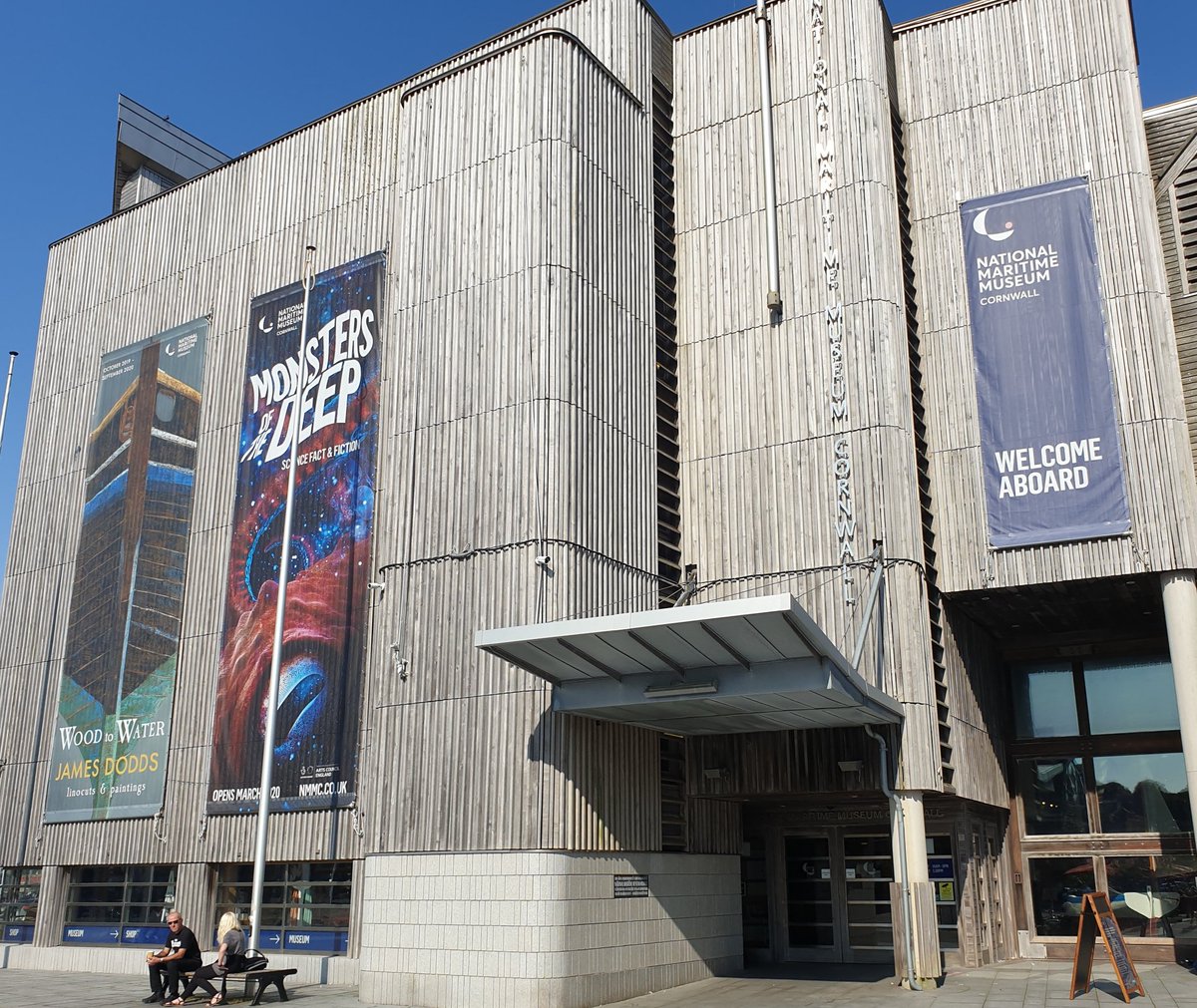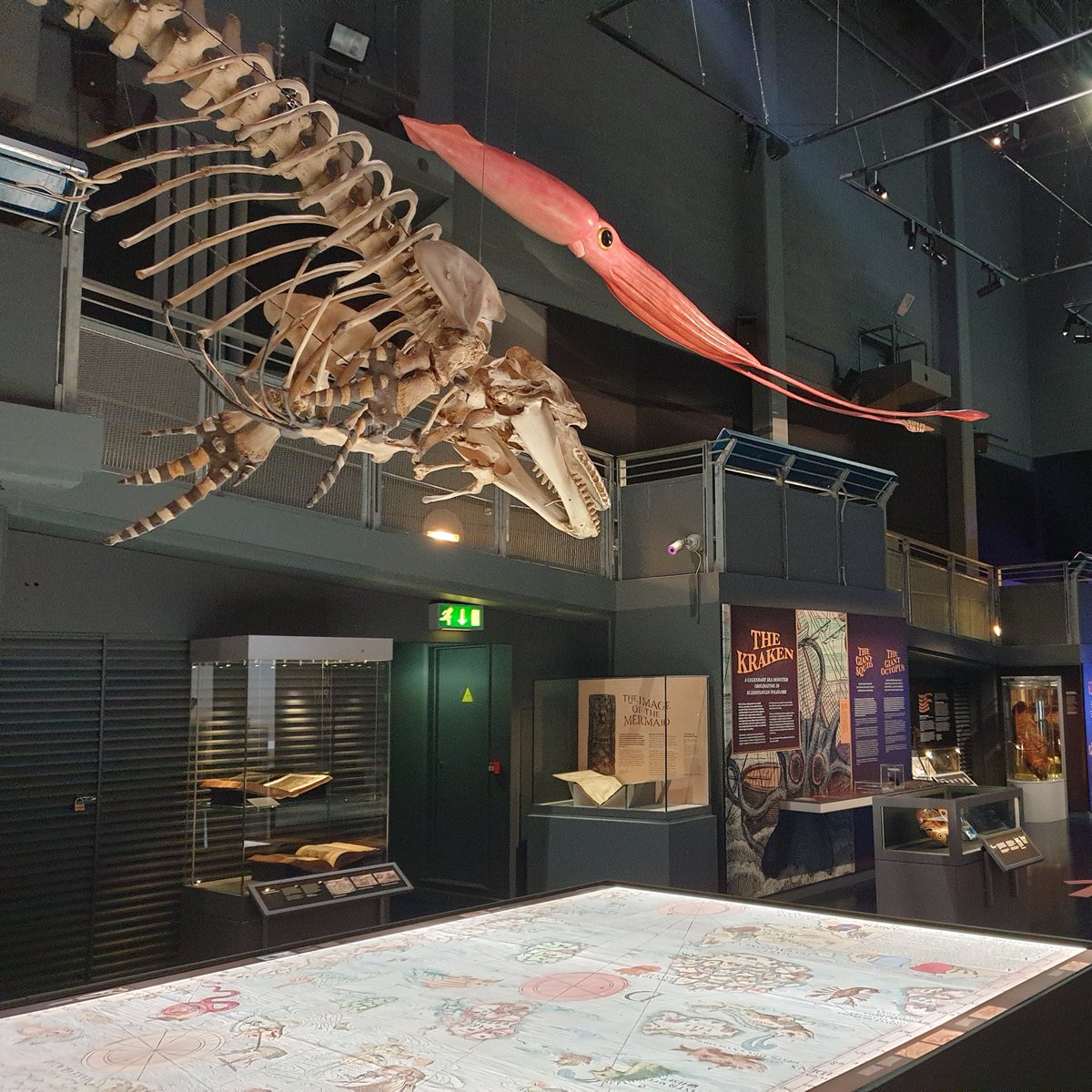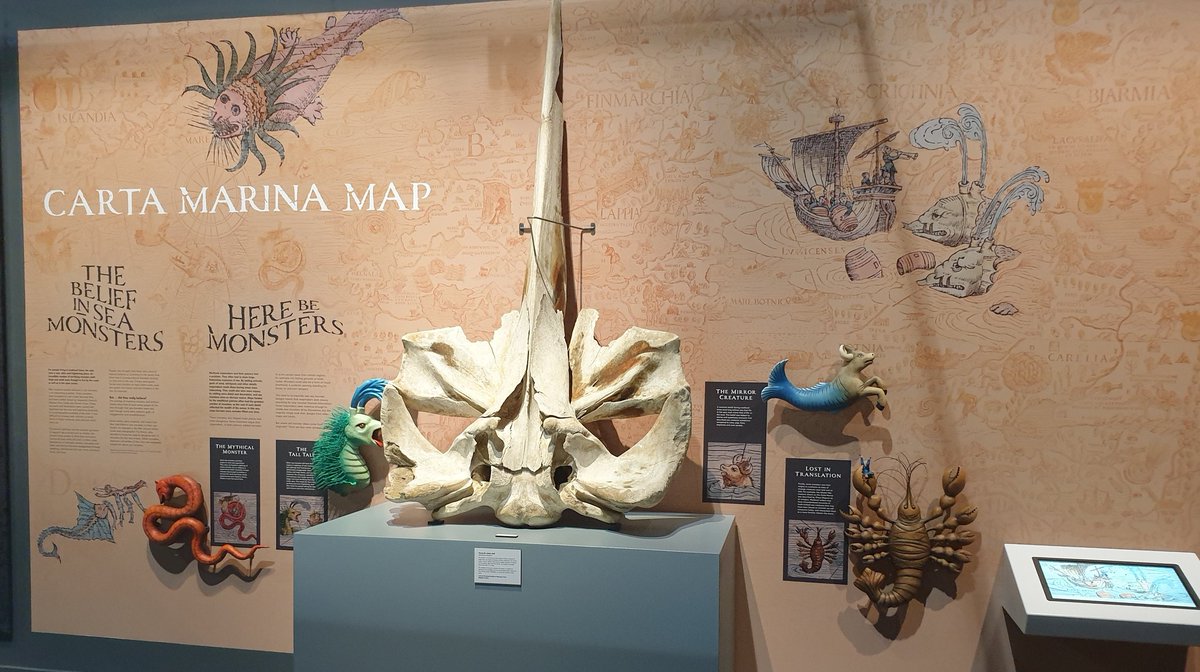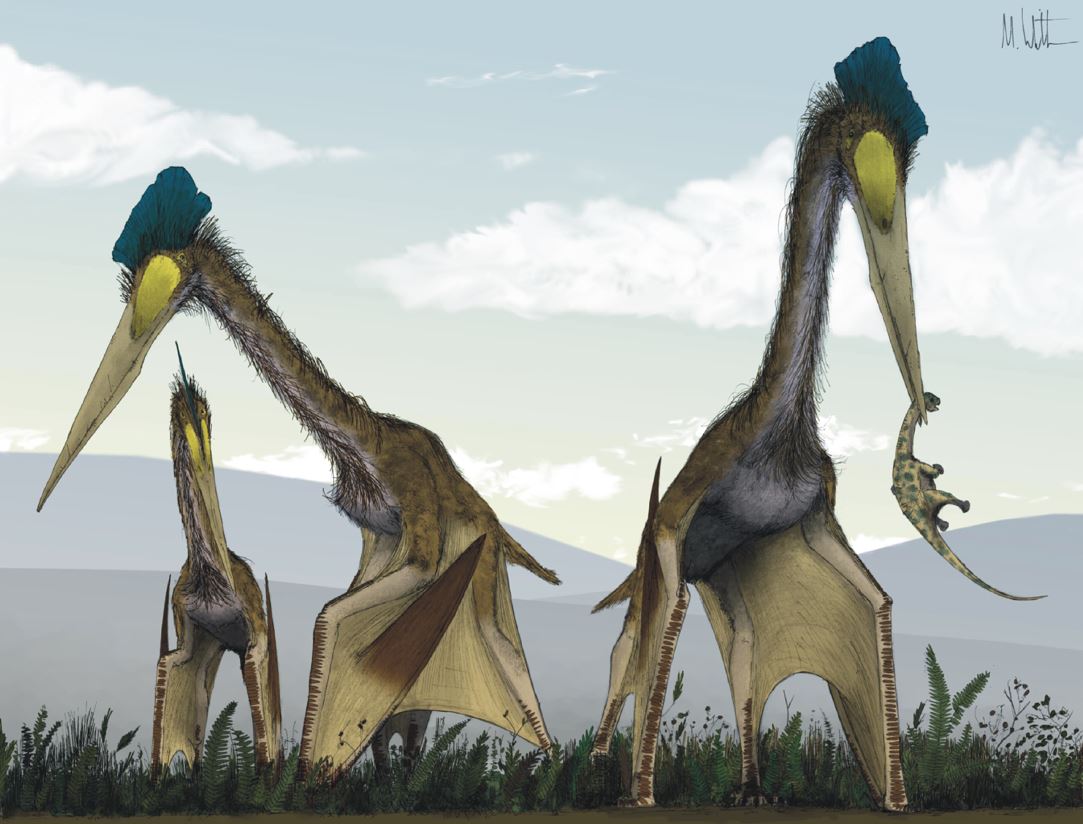
It's #TetZoocryptomegathread time, in which I take a VERY long, detailed look at a monster-themed photo, or photos, or bit of film. This time, we look AGAIN at photos alleged to show a monster carcass: the 1937 Naden Harbour #Cadborosaurus sea monster carcass… #cryptozoology 



As usual, my aim here is to cover the story in all its twists and turns, and to look at the evidence critically and sceptically but to ALSO look at the case as it was interpreted by those who accepted it as a valid bit of monster evidence… #monsters #seamonsters
Some minor backstory before we get to the photos themselves. European colonists of coastal British Columbia, Canada and Washington, USA claimed – from the 1880s onwards – to witness a large sea monster in the region’s coastal waters… 

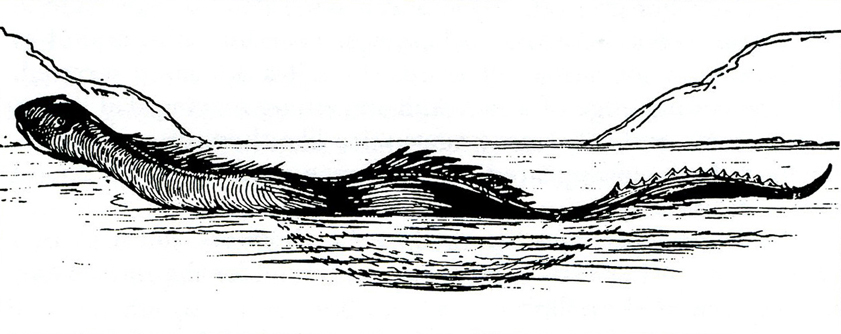

Sometimes said to have a head like that of a camel or horse, sometimes said to be hump-backed or serpentine, and sometimes said to be furry or hairy, or scaly, or wrinkled, it became associated in particular with British Columbia’s Cadboro Bay... (pic by @LordGeekington)... 
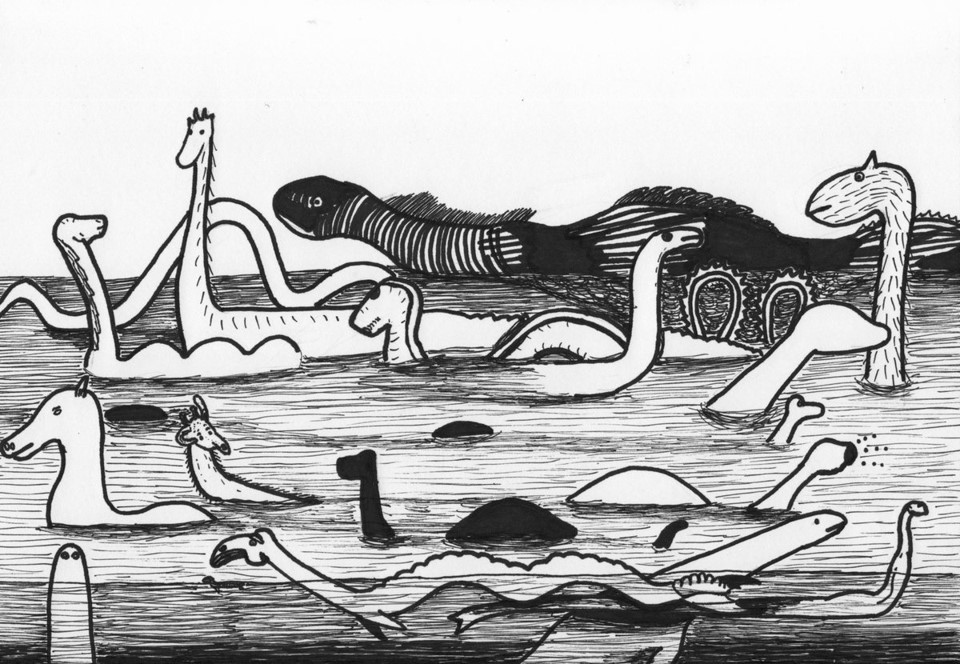
In 1933, managing editor and journalist Archie H. Wills at the Victoria Daily Times (VDT) adopted the name #Cadborosaurus for this mystery sea creature (this had first been suggested in a letter, written to the VDT, by I. Vacedun in 1933)… 

This name stuck and became the creature’s ‘official name’, often abbreviated to ‘Caddy’. Wills wrote about Caddy often in the VDT and he was seen by Caddy’s recent proponents – Paul LeBlond and Edward Bousfield (more on them later) – as worthy of great accolade for this reason... 


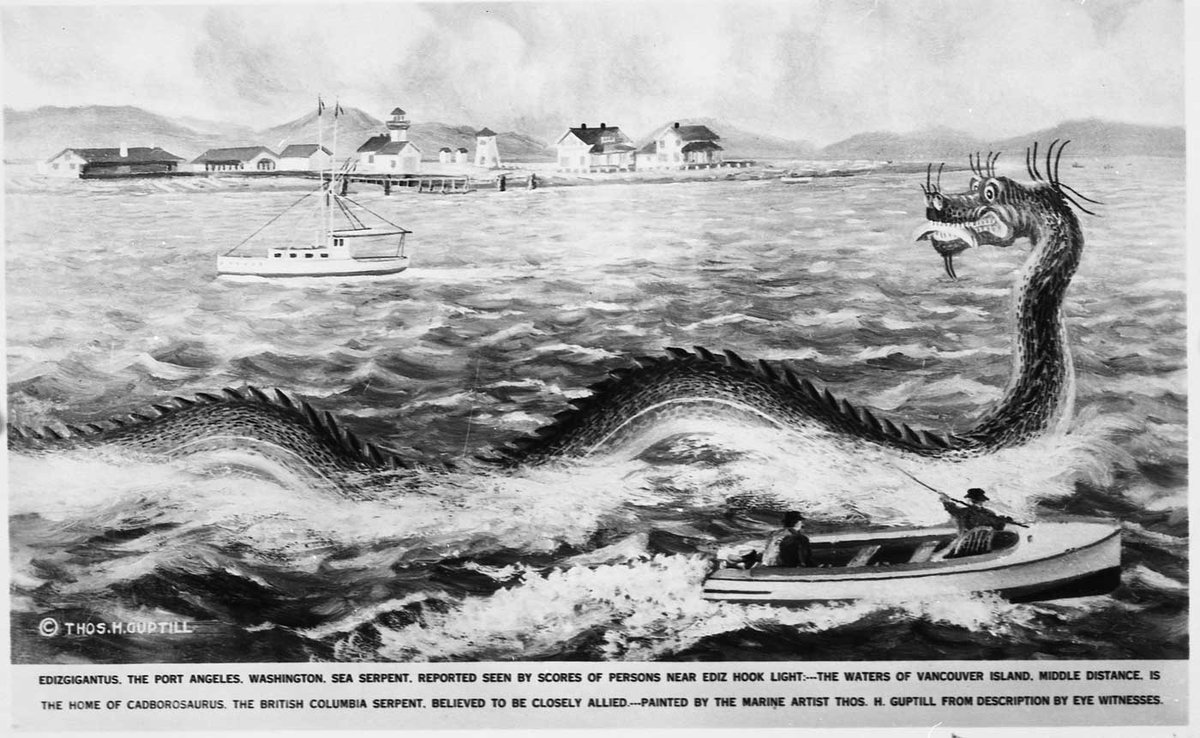

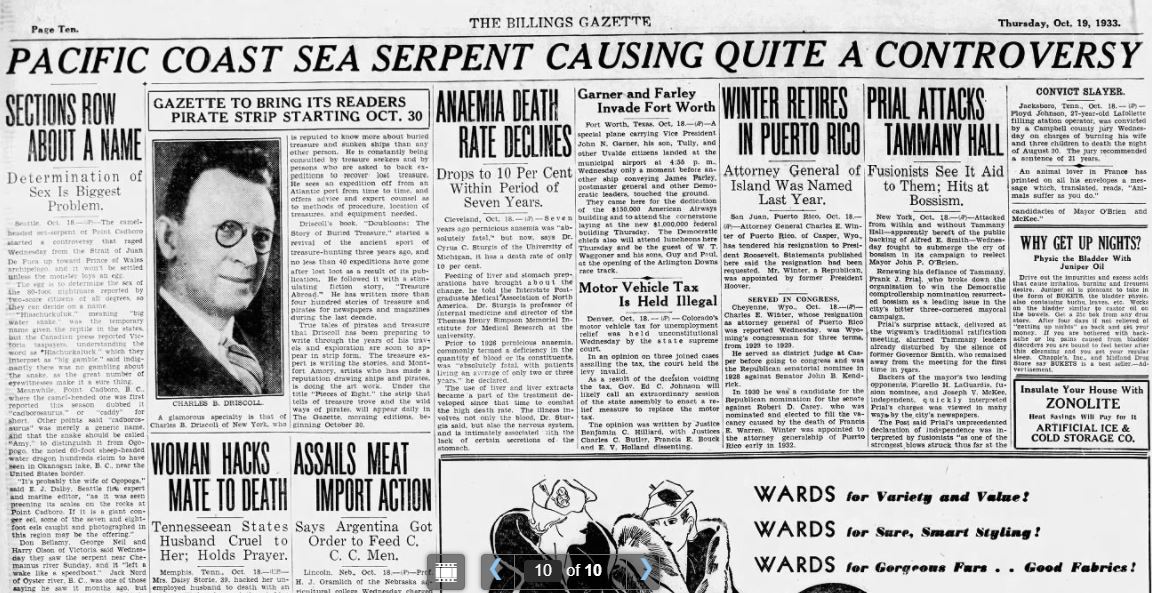
Wills wrote of “being [Caddy’s] sponsor and protector”, and LeBlond and Bousfield even said “If anyone is to be credited with discovering Caddy and perhaps to be honoured by having his name linked to the official description, it should be A.H. ‘Archie’ Wills”...
Now, I don’t wish to sound rude, but I find this aggrandising naïve and perhaps ironic…
Journalists and other people involved in the production of provincial newspapers are not, I’m sorry to say, impartial and unbiased chroniclers of events: they're often (if not always) making decisions about what to cover in order to capture the zeitgeist and help sell newspapers!
They are often sensationalists unafraid to report things that are rumoured or half-believed, and some of them even have a track record of making things up in order to make news…
Indeed, it’s no coincidence that Caddy sightings first really hit the news in 1933. This is the year in which Loch Ness Monster fever took the world by storm... #Nessie #LochNess #LochNessMonster 

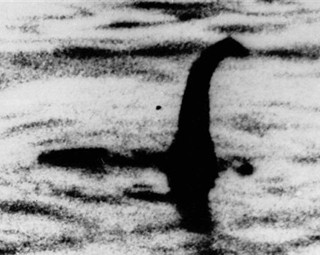
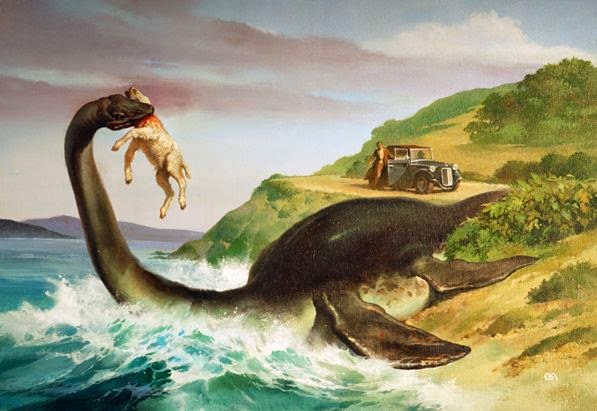
Everyone was fascinated; many wanted a piece of the action. In their 1995 book on Caddy (shown here), LeBlond and Bousfield mentioned 1933’s Loch Ness Monster stories before discussing the Caddy accounts which made front-page news in British Columbia just a few months later… 

I maintain that this is no coincidence: I put it that popular interest in the Loch Ness Monster drove journalists on the west coast of North America (and elsewhere) to start writing about their own similar water #monsters...
I’m pleased to say that Daniel Loxton and Don Prothero noted exactly the same thing in their 2013 book Abominable Science! Even better, they got confirmation from Wills himself… 

In an unpublished c 1985 manuscript kept at Greater Victoria Public Library, Wills wrote how the grim news of the time (the depression, Hitler’s rise to power…) encouraged him to…
“…. try and inject a bit of humor in the newspaper. Rumors were abroad that a sea serpent was disporting itself in our waters and I felt that if the story was handled circumspectly we might have a little fun”…
Dan Loxton (who wrote the sea serpent chapter in Abominable Science!) went on to link Archie Wills’ writings on Caddy with the then current fame of Nessie (the Spicer 1933 Nessie shown here)… 
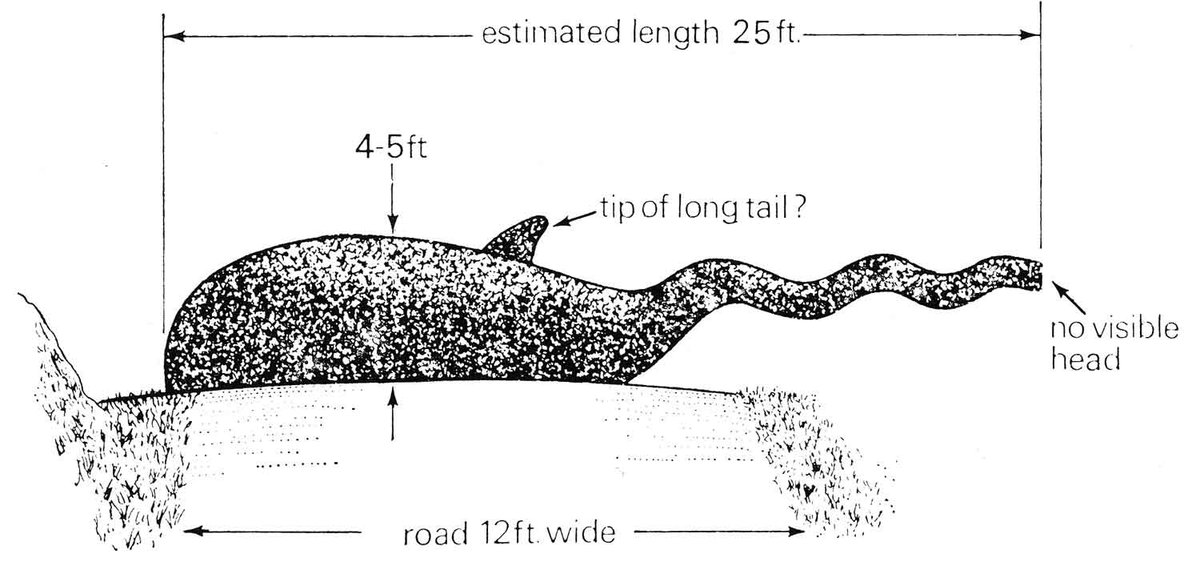
A further problem with Caddy is that there’s no “the creature”: if you look at the reports, people are clearly describing all manner of different things seen at sea, ranging from waves and bits of wood to swimming deer, big seals and more… 

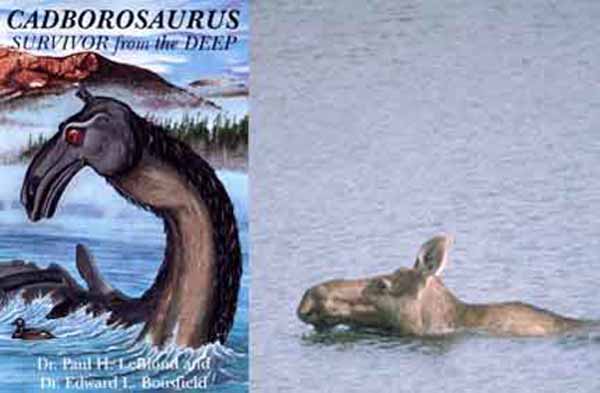
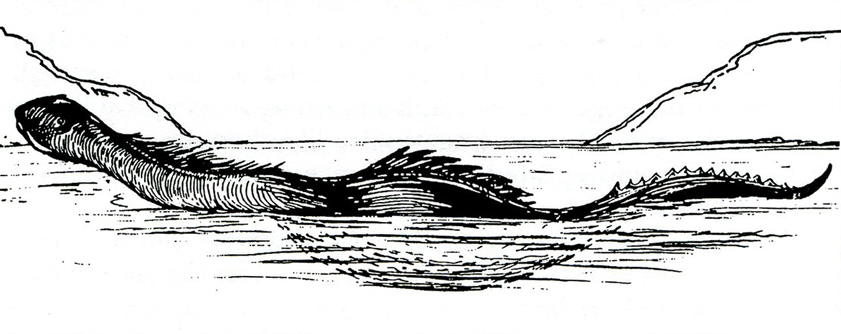
Also telling is that Caddy proponents were quick to claim that confirmation of Caddy’s existence came from indigenous art and legend. They pointed to any and all bits of rock art, sculpture and oral history referring to big, predatory sea creatures as references to Caddy… 

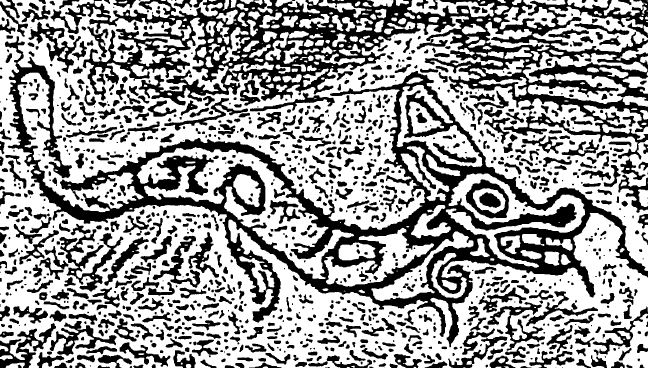

But.... these images and stories reflect all sorts of things (mythified killer whales and pinnipeds, spirit beasts, mythical great serpents). To just lump them into the flesh-and-blood #Cadborosaurus category ignores their diverse origins and independent backgrounds…
Plus they don’t sound like Caddy anyway. Hiyitl'iik of the Manhousat people of Vancounver Island, for example, is said by cryptozoologists to be the same as Caddy, yet its name is said to mean ‘he who moves from side to side’: something Caddy is categorically thought not to do!!
Anyway, fast forward to the early 1990s, a time which saw the exciting news that photos of a genuine Caddy carcass (hailing from the 1930s) had been discovered in some museum archives; there was a real creature at the bottom of things after all!
Two Caddy champions emerged: Dr Edward L. Bousfield – a qualified zoologist specialising on amphipod crustaceans – and Dr Paul H. LeBlond (shown here), an oceanographer with special interests in oceanic waves, fisheries and coastal oceanography… 

I’m sad to say that Ed Bousfield, Caddy’s most vociferous proponent, died in 2016. I corresponded with him quite a lot, as you’ll see shortly (photo of Ed here by Paul LeBlond)... 

And Paul LeBlond – who I didn’t correspond with, but who kindly sent me a signed copy of his 2014 book – is also no longer with us; he died in February 2020…
In their writings (books and a technical paper, read on), Bousfield and LeBlond drew attention to the mid-July 1937 discovery of an animal carcass, about 3.8m long, extracted from the stomach of a Sperm whale killed off Langara Island near the Naden Harbour whaling station… 
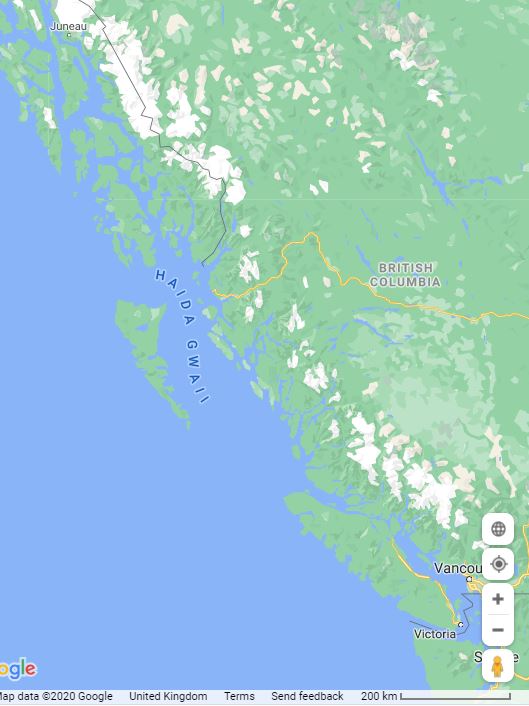
Naden Harbour was on what were then called the Queen Charlotte Islands off the British Columbian coast; the archipelago is today known as Haida Gwaii...
The carcass was noticed as the flensers – who were mostly people of east Asian identity – were opening up the whale’s stomach, who alerted their supervisor F. S. Huband… 
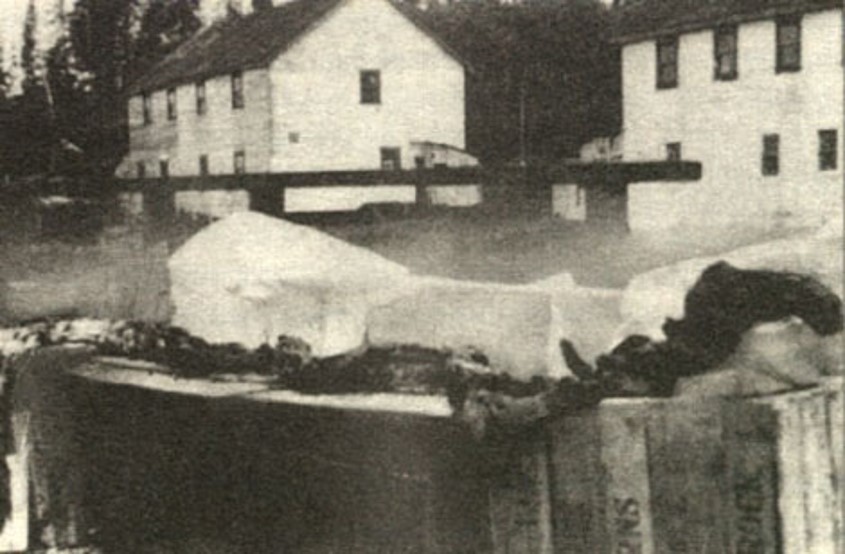
LeBlond and Bousfield tracked down an eyewitness, Jim Wakelen of Victoria, B.C., who remembered the event well. He recalled the carcass causing some excitement among the flensers and “all [the] station personnel came to gawk at it” (LeBlond & Bousfield 1995, p. 51)...
As usual in these sorts of stories, the point is made that everyone who regarded it as remarkable was already familiar with such creatures as six-gilled sharks, ragfish (a poorly known big ray-finned fish of the region; juvenile and adult shown here) and big squid… 
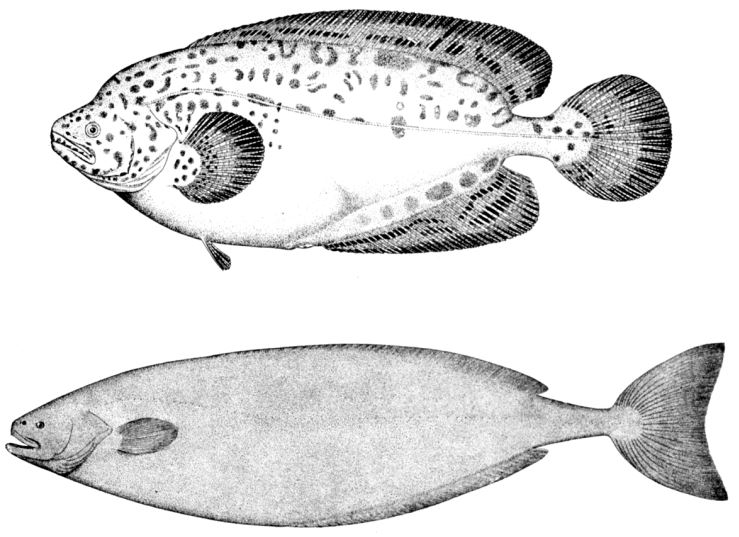
… and thus couldn’t possibly have been mistaken in their feeling that it was something new. I’m sceptical of this take, since even veteran seafarers and fishermen don’t know everything about the animals that occur where they live and work, and you should be too…
Huband decided to take a record of the specimen and had it prepared for photography. It was laid out on a worktable (some wooden packing cases were placed adjacent to the table to increase the available surface length) and white sheets were hung behind to tidy things up… 

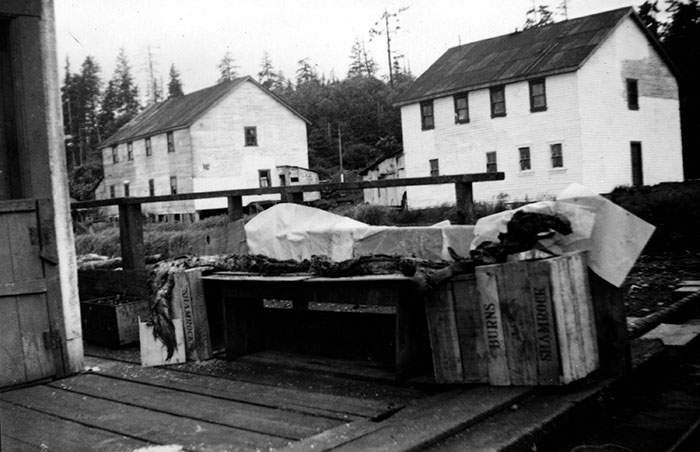

One of the photos (or, a copy of it) was passed to the Victoria Daily Colonist (the rival publication to the VDT mentioned earlier) where it appeared on the front page of October 31st, 1937. It appeared again in the Vancouver Sun in May 1960…
Mention of the carcass was made in the whaling station’s annual report, published in September 1937 in the local Fisheries New Bulletin...
It was noted that the carcass was about 10 ft long, had a head recalling that of a large dog, “animal-like vertebrae” (err), and a tail “resembling a single blade of gill bone as found in whales’ jaws”…
During their 1992 research, Bousfield and LeBlond discovered (thanks to Royal British Columbia Museum ethnologist Grant Keddie) Huband’s photo in the Provincial Archives at Victoria...
... This photo shows the scene at a slightly oblique angle, and it’s this one that Bousfield and LeBlond initially went public with (here's a Jan' 1993 news piece from New Scientist)… 

Perhaps coincidentally (I’m not sure), 1992 was also the year in which Bousfield and LeBlond spoke about #Cadborosaurus at the American Society of Zoologists (ASZ) annual meeting… #cryptozoology #seamonsters
It’s unusual for presentations on cryptids to be given at technical zoological meetings (albeit not unheard of), and a consequence of them giving this talk was (a) a crap-ton of media interest, and...
... (b) a publication – albeit an abstract only – in the coveted pages of the American Journal of Zoology… 

This abstract – the precursor to or ancestor of the 1995 monograph I’ll talk about in a minute – described how “photographs of specimens” were combined with eyewitness accounts and sketches in order to build a model of what this cryptid (unnamed in the abstract) might be like...
At this point (1992), Bousfield and LeBlond were saying that the animal’s phylogenetic affinities couldn’t be pinned down, and that it possessed “both reptilian and mammalian characteristics”…
They were also bold enough to suggest that their British Columbian animal might have links to “marine and freshwater cryptids of the northern hemisphere including those of Loch Ness in Scotland, and Lake Okanagan”. Ok...
This presentation was considered worth covering by various journalists, so 1992 and 93 saw #Cadborosaurus – in particular the existence of a photo of a carcass – get airing in the mainstream press, often accompanied by a photo of a smiling Ed Bousfield with the Huband photo… 



An especially good review of events was provided by Mike Dash in Fortean Times. Dash noted that Bousfield and LeBlond’s ASZ presentation saw them announce that #Cadborosaurus was probably endothermic, predatory, and deep-diving, though…
… Bousfield had earlier told The Economist that Caddy possessed “an elaborate (and hitherto quite unknown) respiratory system: tubercles lining thew animals’ back acting as gills to pass water over highly vascularised tissue beneath” (quoting Dash there, not Bousfield)...
It was clear, I recall hearing, that Bousfield and LeBlond were putting together – or had already put together – a technical paper of some sort on the creature, and it was going to include a fairly in-depth take on its biology…
Incidentally, this fed into the fact that the early 1990s seemed like an extraordinarily positive time for ‘scientific #cryptozoology’ (an area I’ll be writing about at TetZoo.com some time soon)…
Anyway… how, you might wonder, could Bousfield and LeBlond make bold proclamations about the animal’s biology and anatomy in the absence of an actual specimen?
That might be a fair question, but it was obvious by this time that they were indulging in the sort of ‘creature building’ speculation common in the cryptozoological grey literature, most famously the writings of ‘father of #cryptozoology’ Bernard Heuvelmans… 


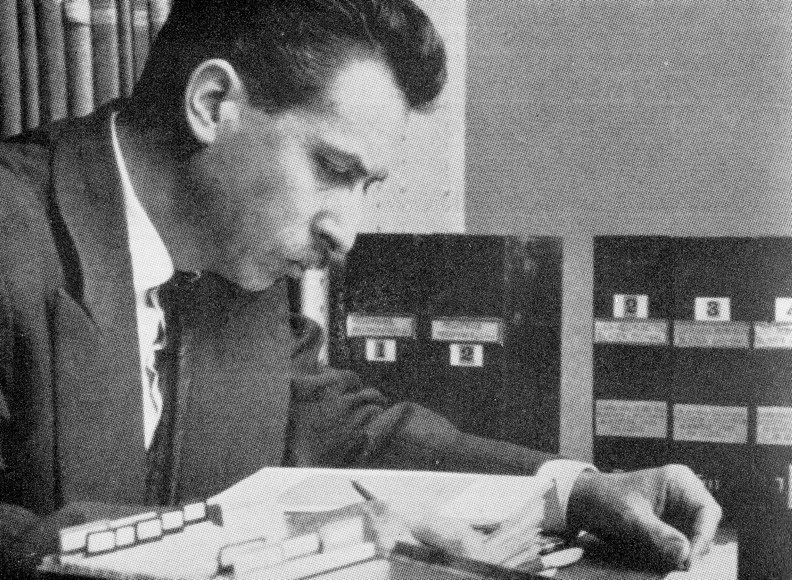
Indeed, #Cadborosaurus as imagined by Bousfield and LeBlond – an aquatic mega-serpent with novel physiological adaptations, representing an entirely new, radically novel lineage without close living or fossil representatives – is very much built in the same mould as...
... the imaginary sea serpents devised by Heuvelmans (with help from his friend and colleague Ivan Sanderson) (art by @LordGeekington)... 

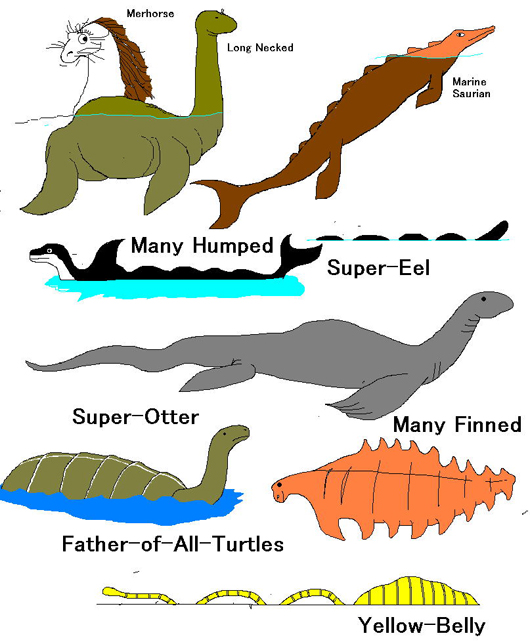
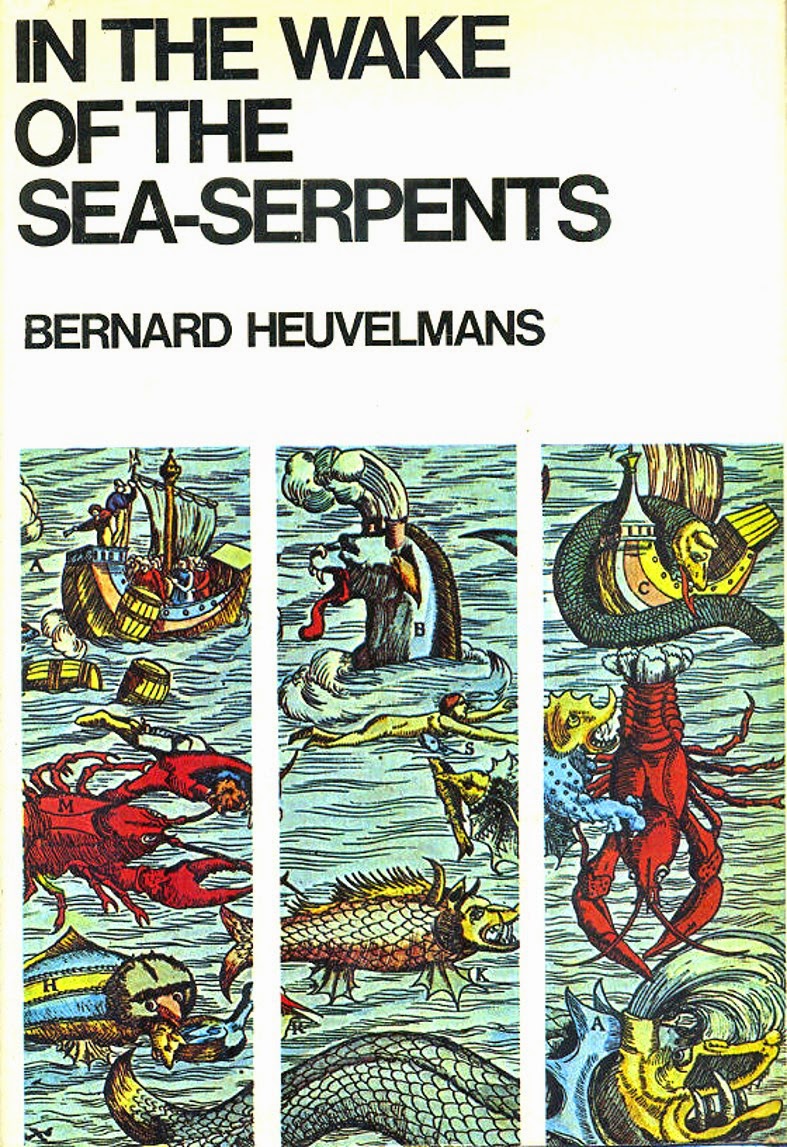
Fast forward to January 1995… Bousfield and LeBlond were aware that more photos must exist, since author and former fisherman William Hagelund had included one (showing the carcass at a different angle from that shown in Huband’s photo) in his 1987 book Whalers No More… 
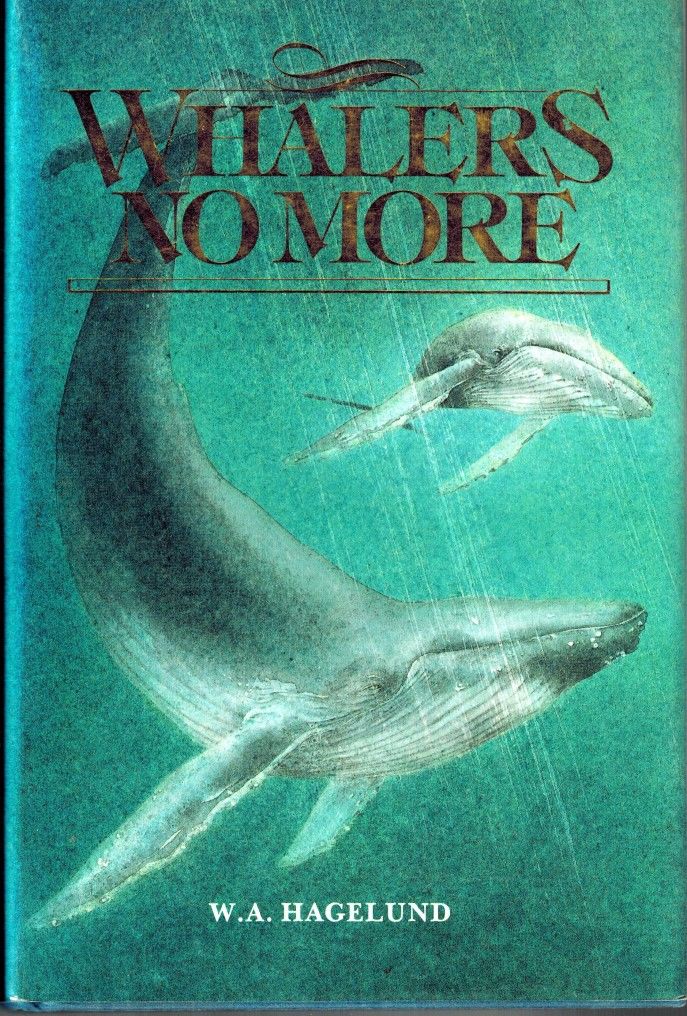
Hagelund had obtained this photo from the Vancouver Maritime Museum, and investigation here revealed that it was one of two additional photos of the carcass…
These were included in a photo album compiled by G. V. Boorman of Victoria, B.C., entitled ‘Whaling in the Queen Charlotte Islands, 1937’. A duplicate set were also located in the Provincial Archives in Victoria. Boorman was first-aid officer at the whaling station…
Boorman’s photos were sharper, and showed the carcass more clearly in lateral view, than Huband’s. Of the three known photos, the two Boorman ones were therefore preferred by Bousfield and LeBlond… 



Bousfield and LeBlond noted that no-one seems to have paid any of the three photos any serious interest over the years, and they were effectively unknown to the scientific community prior to Bousfield and LeBlond’s discussion of them...
During 1995, the interesting news arrived that Bousfield and LeBlond were including the photos in a formally published technical monograph on #Cadborosaurus wherein they would formally name this creature, using the photos as critical evidence…
Formal zoological papers on cryptozoological evidence are few and far between – especially those that have a positive or affirmative take on the alleged mystery beast – so this was exciting…
I purchased a copy through the UK’s Centre for Fortean Zoology (I was an undergrad student at the time, interested in pursuing studies of fossil marine reptiles)…
The backstory to the paper itself is interesting. It was published as Supplement 1 to Volume 1 of a new journal – Amphipacifica: Journal of Systematic Biology – and it _looked_ as if the journal was launched so that Bousfield and LeBlond could publish their #Cadborosaurus paper… 

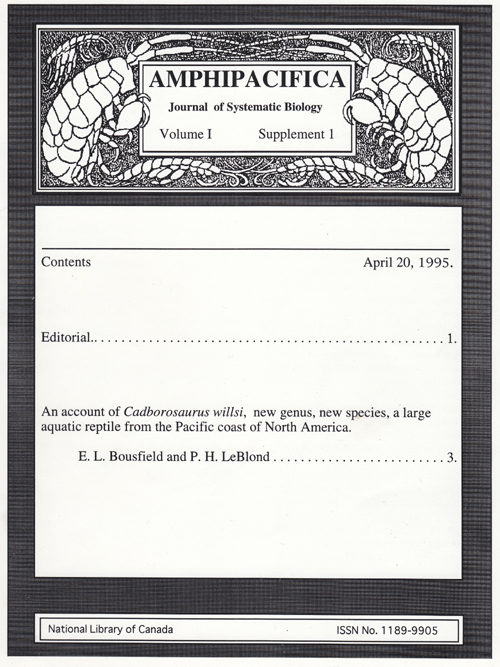

This technique (creating a new journal purely as a vehicle for a paper that you’ve been unable to publish elsewhere) _has_ been used elsewhere in #cryptozoology (Melba Ketchum and her colleagues infamously used it to publish their 2013 paper ‘Novel North American Hominins’)…
Was it being used here? Well, apparently not: I’m reliably informed by an amphipod specialist that Amphipacifica is in fact a worthy and respectable venue for amphipod-themed studies. Fair enough… 

Two of the three members of Amphipacifica’s editorial board (Craig P. Staude and Phil Lambert) published – as part of an Editorial article – objections to the publication of Bousfield and LeBlond’s #Cadborosaurus paper...
... specifically stating “… we are opposed to its publication as a formal species description for several reasons…”
Staude and Lambert went on to note their concerns about the usefulness of the photos, the anecdotal nature of the relevant eyewitness descriptions, and the absence of a holotype. Only one of the three journal editors was fully behind the paper’s publication… Ed Bousfield!
Regardless of these disagreements, the 1995 monograph saw print. It’s a 25 page study that aims to lay out the case for Caddy’s existence and scientific validity, names it as a new living reptile species, and goes on to discuss its possible affinities, lifestyle and biology… 

The keystone bit of evidence is the 1937 carcass or, rather, the three photos of it, since the carcass itself is of unknown whereabouts…
Well, actually, a section of spine, a piece of tissue identified as baleen, and some skin – all supposedly from the carcass – were forwarded to either the Pacific Biological Station at Nanaimo, or perhaps the Royal British Columbia Museum in Victoria...
It might be that specimens were sent to both places. It seems that something arrived in Victoria at least, since (as reported in the Victoria Daily Times on July 23rd, 1937), museum director Francis Kermode identified the relevant remains as those of a “fetal baleen whale”...
Nothing else is recorded, so the general feeling is that the specimen was lost, discarded, or not retained in the first place, and that the 'fetal baleen whale' identification had nothing at all to with the alleged Caddy carcass...
Jim Wakelen (one of the observers of the carcass you’ll recall from earlier) provided more information in a phone conversation with Bousfield in 2007...
He said that the carcass was “coiled up and preserved in salt”, sent by boat to Vancouver, and then stored in acetone at a warehouse belonging to the American Whaling Company in Bellevue, Washington…
This information (from LeBlond et al.’s 2014 book Discovering #Cadborosaurus, which I like very much) sounds compelling and detailed, and sure does make it sound as if the carcass was retained and preserve. But, alas, there’s no record… 
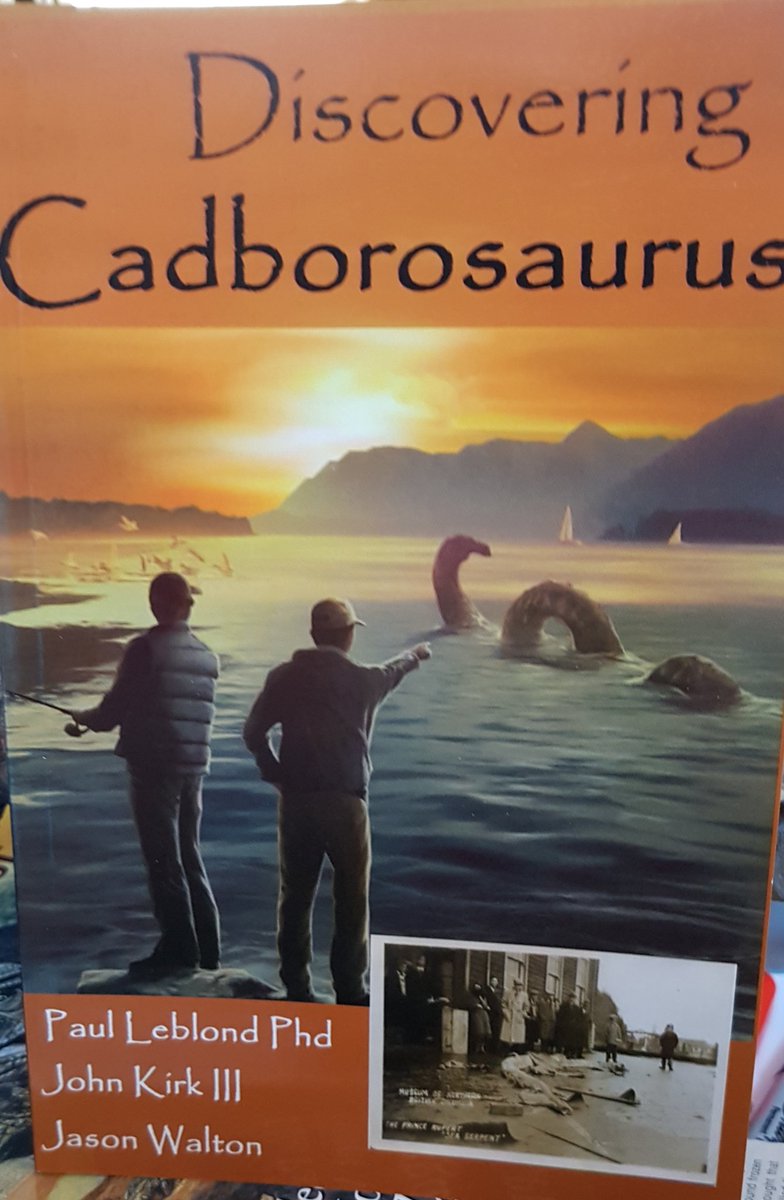
We’re only left with the photos then. What do they show? They’re black and white, and (as noted earlier) depict the long, slender, dark carcass of a vertebrate animal laid out on a table and a series of packing cases… 

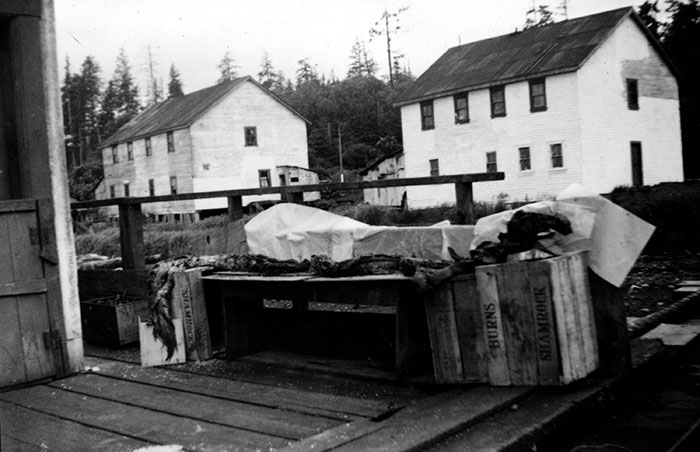

There’s what looks like a rectangular head at one end, a crumpled, adjoining ‘neck’ region, a sinuous, serpentine body, and a ragged, serrated region with what looks like a ragged tail fin… 


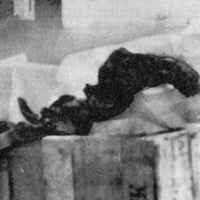
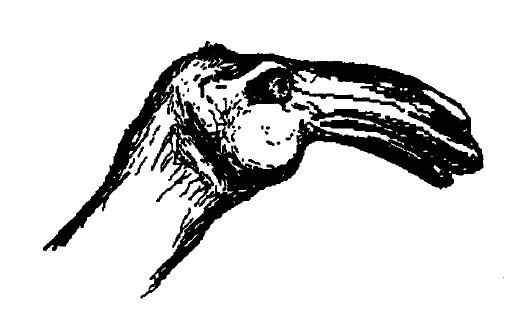
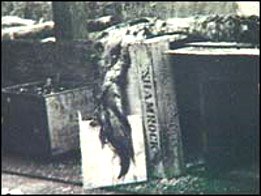
In the 1995 monograph, Bousfield and LeBlond produced a diagrammatic interpretation and noted further details which they thought they could see (note my wording there)… 

They pointed to two pointed structures located at the neck-body junction and identified them as fore-flippers, and also emphasised the presence of oval tubercles located along the dorsal surface of the body (which number about 26)…
They also thought that a fluke-like structure was present at the rear end of the body and argued that it represented a highly modified limb. Adjacent to this was, they claimed, a short tail. We’ll look in detail at both of these body parts in a minute… 
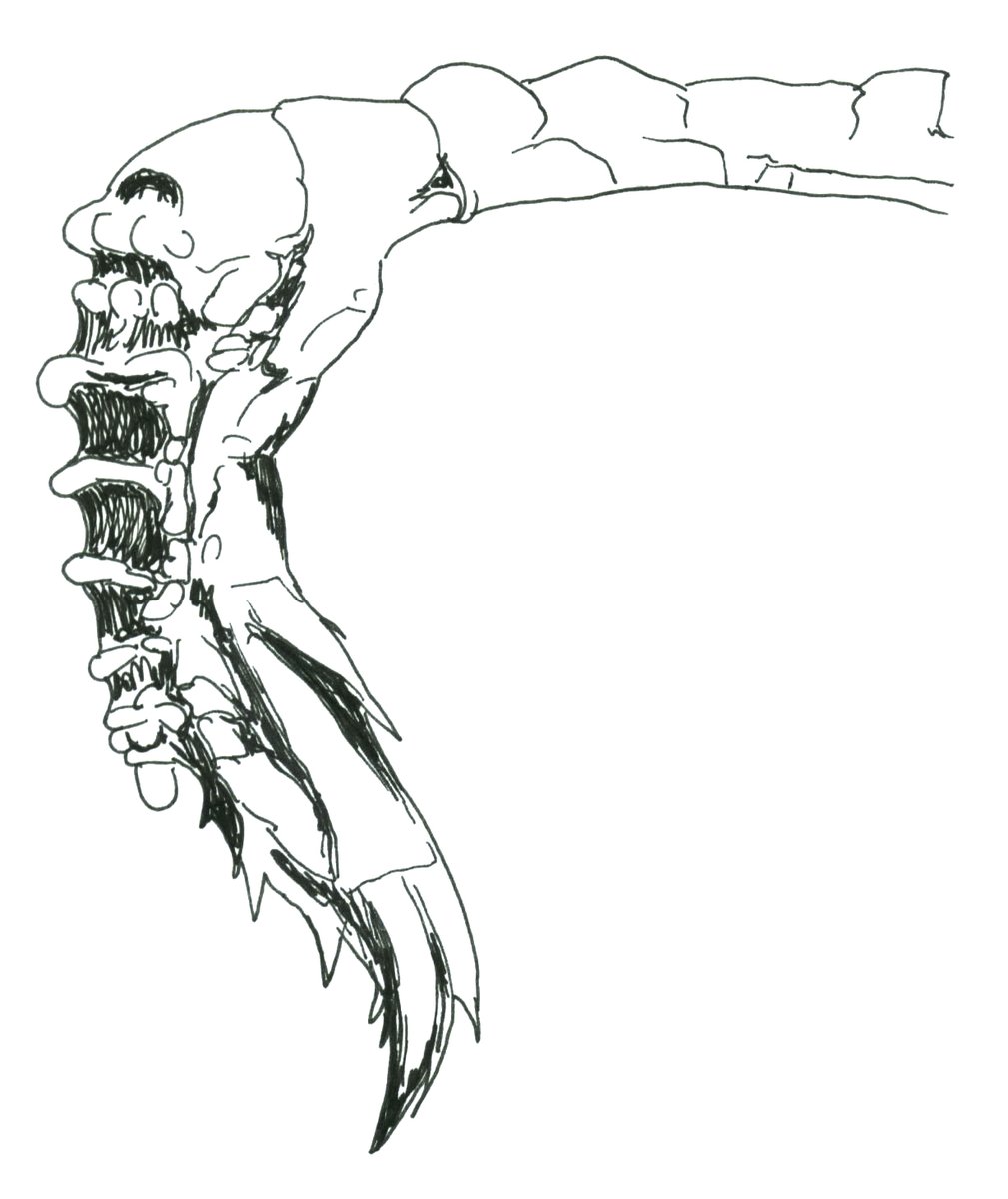
It’s made clear throughout the monograph – including in its title – that #Cadborosaurus was interpreted by Bousfield and LeBlond as a reptile. Their systematics section lists it as ‘Class Reptilia, Subclass Euryapsida?, Order Plesiosauria?’…
The question marks denote their allusion to uncertainty, but the point is clear that they were regarding it as a possible modern-day plesiosaur…
This is super-weird. As we all know, suggestions that #plesiosaurs might have survived to the present and be the explanation behind ‘sea monster’ reports go back to the mid-1800s... 
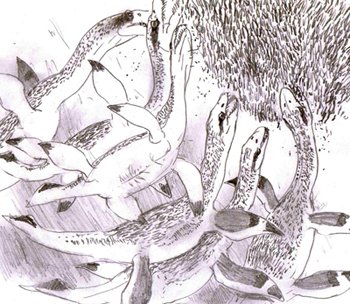
.... (see the 2019 paper Charles Paxton and I published on this very issue, discussed here: tetzoo.com/blog/2019/4/27…) and are ubiquitous in popular literature and culture…
Yet Caddy – which is purportedly serpentine, furry, with a camel-shaped head, ears or horns, and said to more via vertical undulation – is (if imagined as real) about as different from a plesiosaur as you could possibly imagine. Why on earth make this odd, wayward suggestion? 
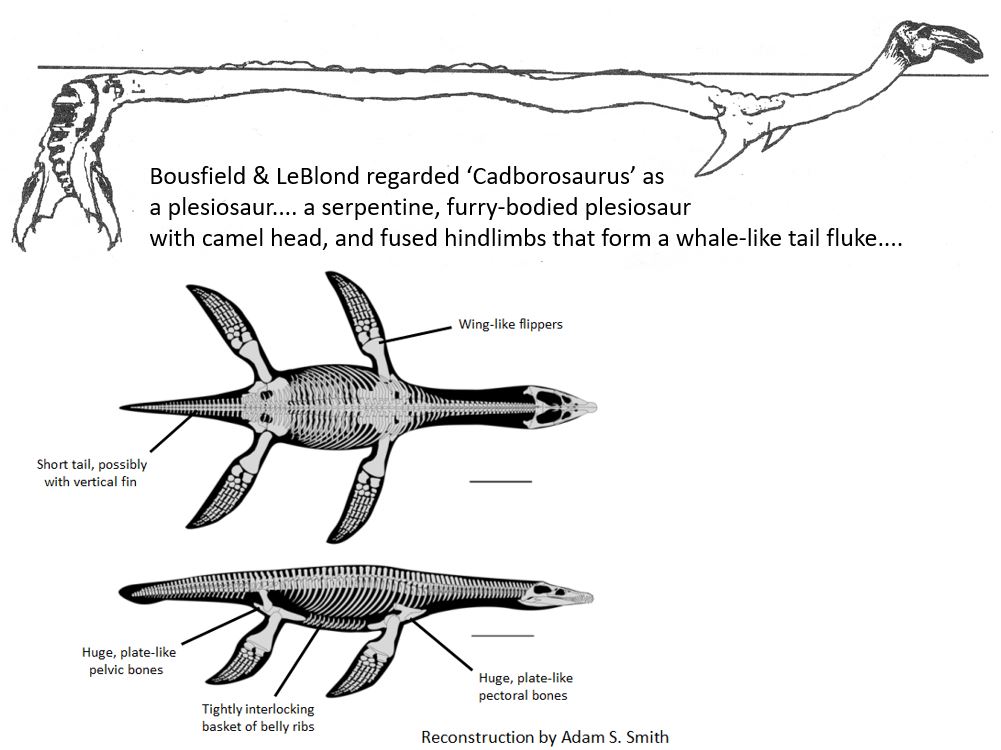
Bousfield and LeBlond, as it happens, didn’t just push this idea due to social inertia, but did aim to justify it...
They did this via their discussion and interpretation of specific anatomical details, but in order to see what they did and why they concluded what they did we really have to drill down on the details. It gets weird, but here we go…
Recall the pointed structures close to the supposed junction between the ‘body’ and ‘neck’? To emphasise that these are forelimbs, Bousfield and LeBlond featured a reconstruction of the Caddy forelimb and showed it alongside the forelimb of Cryptoclidus, a Jurassic plesiosaur… 
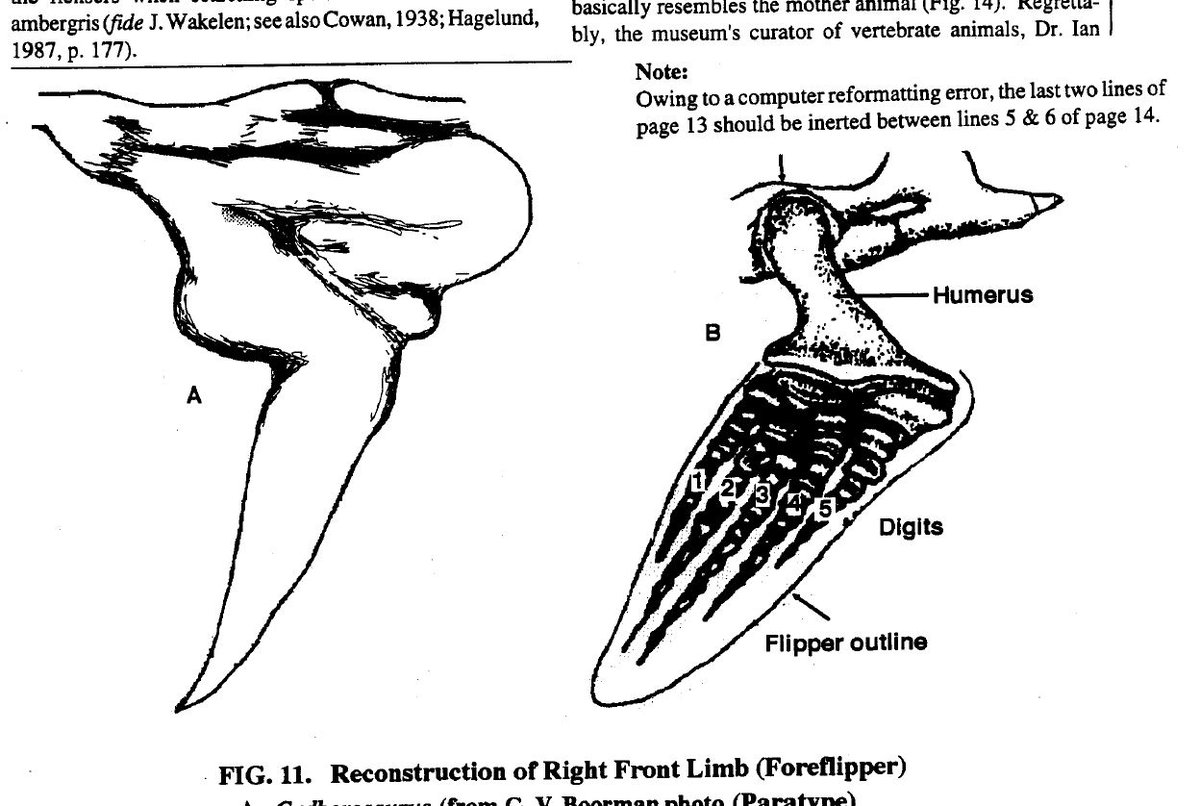
They did this in order to show that both are extremely similar in shape and proportions, and thus add support to their view that #Cadborosaurus is a plesiosaur…
They took their image of the Cryptoclidus forelimb from David Norman’s 1985 book The Illustrated Encyclopedia of Dinosaurs... 

... which, for me, is a red flag: in a technical paper, you should consult and cite technical works, not popular books (unless the book is specifically relevant to your point or argument)… 
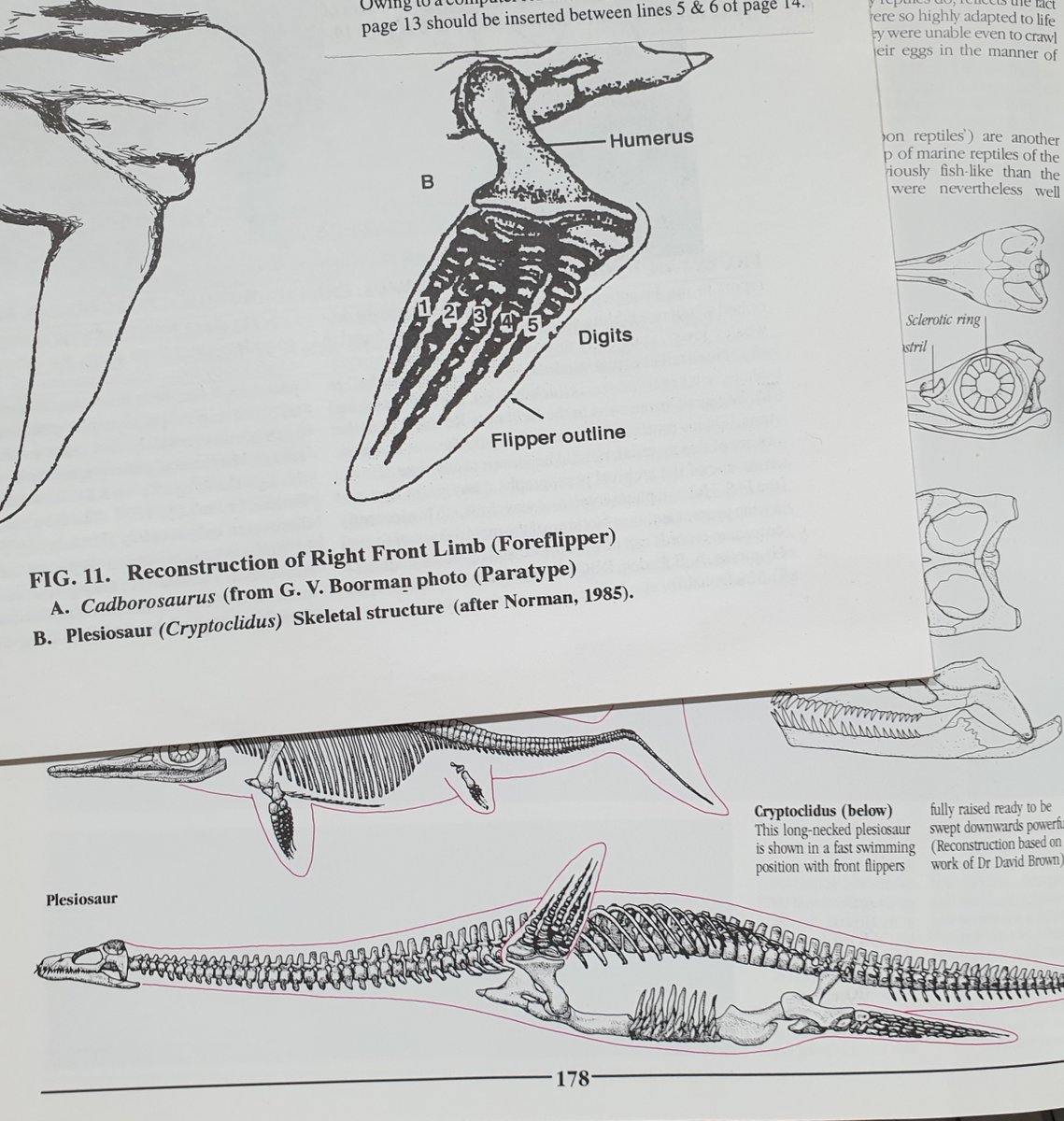
Any check with a knowledgeable expert would have allowed them to find that the Cryptoclidus diagram featured in Norman 1985 is from David Brown’s 1981 monograph on Cryptoclidus… 

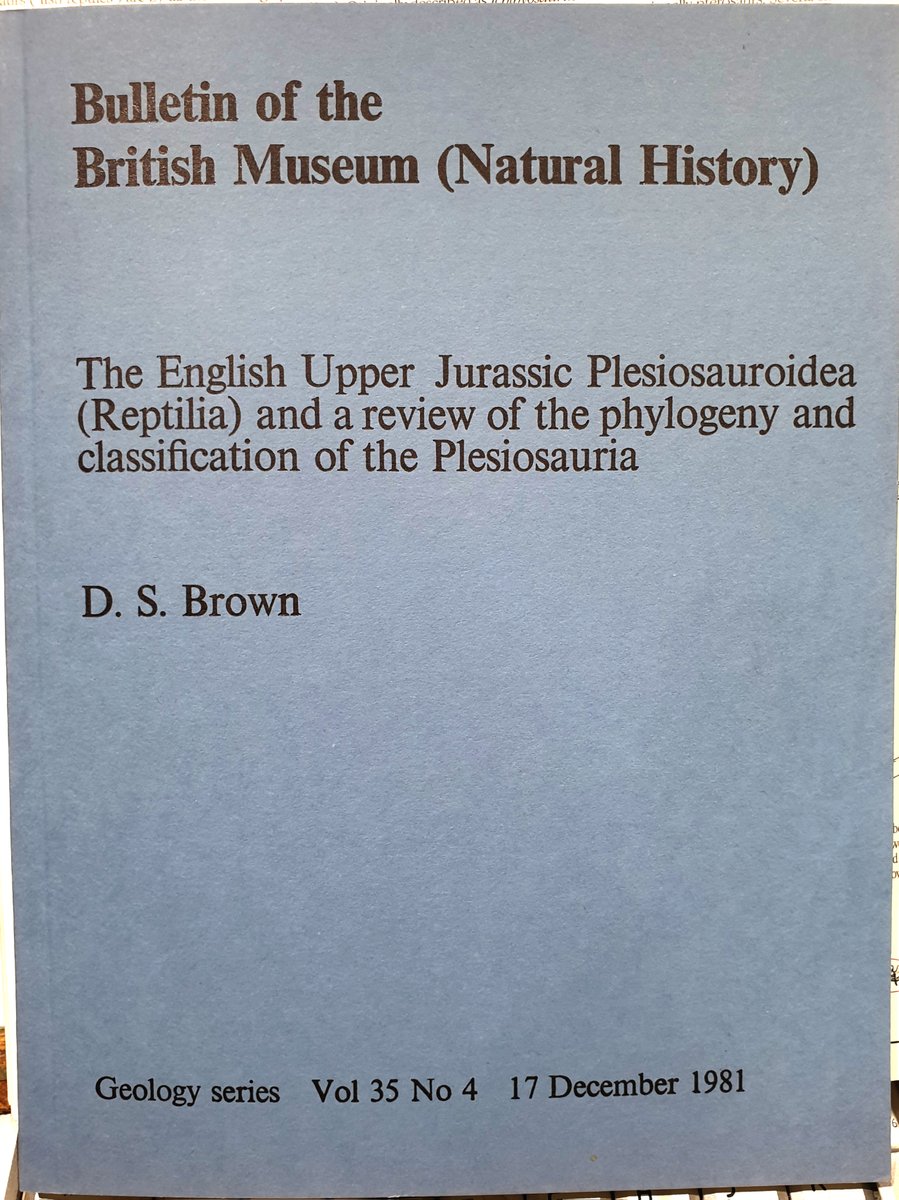
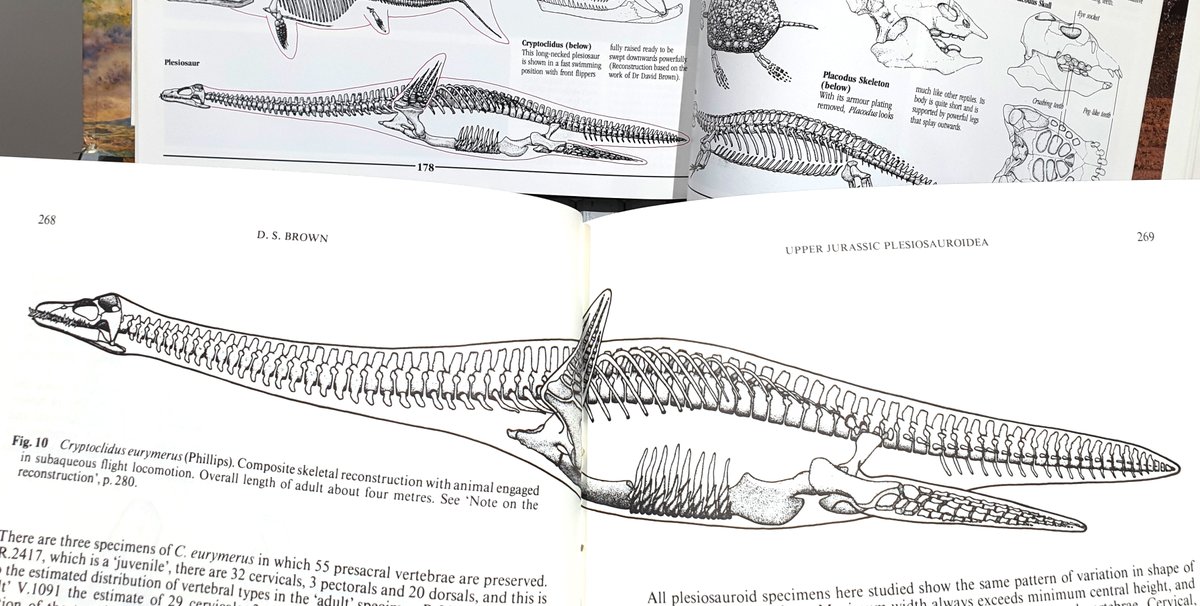
In fact, Bousfield & LeBlond’s #Cadborosaurus monograph doesn’t cite ANY technical work on #plesiosaurs AT ALL! Not a good look in view of their ‘Caddy is a live plesiosaur’ argument…
This sort of thing might not seem interesting or important, but it is to scientists who are paying attention, since it shows whether the authors concerned are checking the sort of sources they should and, frankly, doing research of a standard we expect…
This is especially true of those cases where the research concerns a remarkable claim: if you’re describing what’s claimed to be an actual real carcass of a bona fide sea monster, you better be checking and citing the technical literature properly, not relying on popular sources.
The Cryptoclidus paddle shown in Norman’s book (and, before that, in Brown’s monograph) is in a raised, ‘upstroke’ pose. Bousfield and LeBlond didn’t want that, so they redrew it in a ‘downstroke’ pose…
… but this means that they then drew the paddle’s lower surface as if it were the upper surface. Aaand they labelled the digits back to front, putting digit 1 as digit 5 and so on. Sloppy work, guys... 

A similar thing happened with the hindlimb, though here the story is even more complicated. Bousfield and LeBlond thought that the ragged end section of the Naden Harbour carcass represented a fluke-like propulsive organ but NOT a tail fluke… 
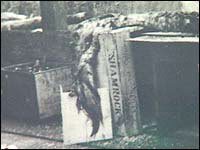
They claimed that distinct bones could be seen within the ‘fluke’: that sections corresponding to the thigh, shin and foot were all there, and that these had been co-opted into a novel structure, a ‘pseudo-fluke’ which involved both hindlimbs and a reduced, serrated tail…
Thanks to their enlargement of one of the Boorman photos, they claimed to be able to see a lot of anatomical detail on the tail: not just individual vertebral segments (!), but a midline ‘mid-dorsal crest’ formed of bony knobs....
.... and two ‘dorso-lateral crests’, formed of additional bony knobs, on either side of it… #cryptozoology #seamonsters #Cadborosaurus 

I’m sure I don’t need to tell you that it is absolutely not normal for vertebrate animals to be constructed such that their individual vertebral segments are visible on their exterior…
Ok, you might argue that the carcass was imagined by Bousfield and LeBlond to be partially skeletonised due to the time it had spent in the whale’s stomach, but – no – their diagrams of #Cadborosaurus in supposed living condition....
.... very clearly show that they evidently thought that this is exactly what it looked like all the time. This is doubly confirmed by the colour paintings of ‘Caddy in life’ they supervised, like this very nice illustration by Susan Laurie-Bourque… 



They argued, you’ll recall, that #Cadborosaurus was a post-Cretaceous plesiosaur, so their argument was that the bones of this ‘pseudo-fluke’ could be homologised with the bones of a plesiosaur’s hind paddle...
The published a diagram showing the ‘pseudo-fluke’ alongside a hindlimb labelled as that of the Jurassic plesiosaur Cryptoclidus… 
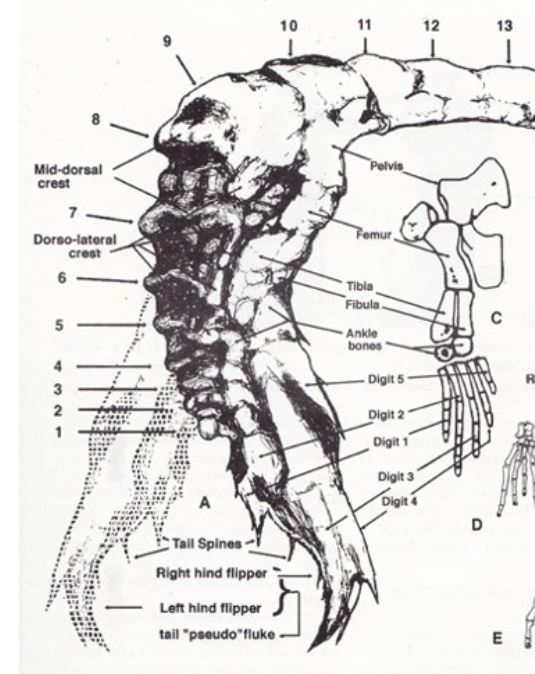
Their two diagrams do look _vaguely_ similar _if_ you accept the Bousfield and LeBlond interpretation. But… oh dear. The ‘Cryptoclidus’ hindlimb they figure isn’t from Cryptoclidus at all; instead, it from a very different sort of animal quite distantly related to #plesiosaurs…
…. it’s from the Triassic Pachypleurosaurus, a marine reptile (about 1.2m long) that _is_ part of the same major group as #plesiosaurs (Sauropterygia), but isn’t a plesiosaur at all. Specifically, Bousfield and LeBlond used a diagram from Carroll & Gaskill’s monograph of 1985… 

Pachypleurosaurs, in fact, are not especially modified for aquatic life relative to plesiosaurs, and their limbs aren’t especially paddle-like, in contrast to plesiosaurs…
If Bousfield and LeBlond really had compared the ‘pseudo-fluke’ of Caddy to the hindlimb of a plesiosaur, it would have been obvious that there's no close similarity (plesiosaur hindlimbs here from Williston 1925).. 

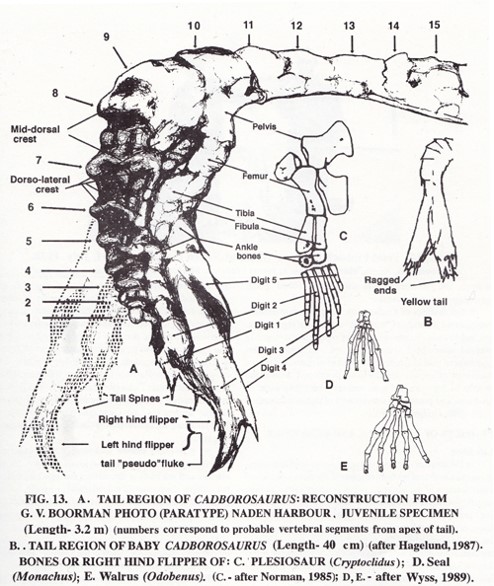
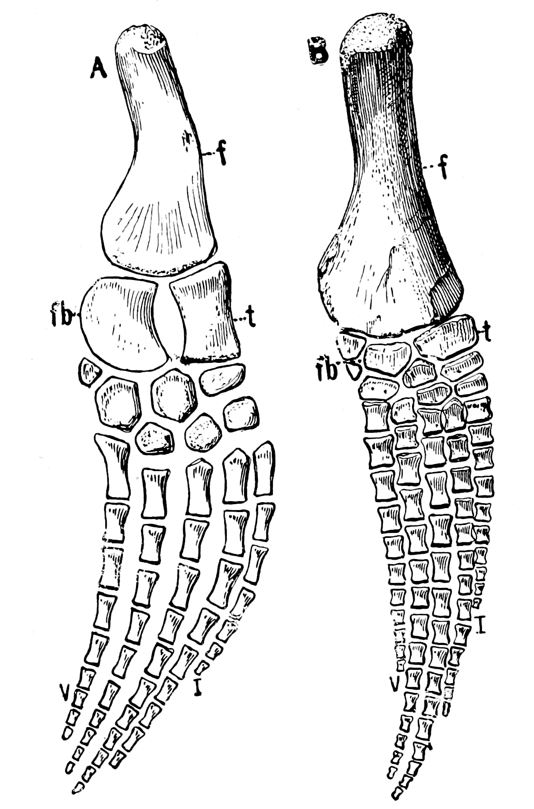
… they pointed to the presence of a big and obvious tibia, fibula and ankle bones in the Caddy carcass and showed how they occupied a big proportion of the ‘pseudo-fluke’s’ length....
... yet these bones in plesiosaur hindlimbs are so strongly modified that they only contribute to a small section of hindlimb length and are dwarfed by the portion of the hindlimb made up of the digits…
IF their interpretation of the Caddy ‘pseudo-fluke’ as being pachypleurosaur-like was valid (which it wasn’t… read on), then all they would have succeeded in doing was showing that the pseudo-fluke had the exact same hindlimb elements as all other standard tetrapods...
It wouldn’t be indicative of any link to plesiosaurs at all...
Oh, and… as with the Cryptoclidus forelimb, they cited Norman 1985 for this diagram. But that’s a cheat, since Norman 1985 doesn’t figure Pachypleurosaurus at all, nor any diagram at all similar to it....
They must have copied the diagram from elsewhere and failed to properly record and cite that source… which is again a red flag…
All of this is, again, super-trivial. So let’s forget it and pretend that Bousfield and LeBlond’s point – that the Caddy ‘pseudo-fluke’ is similar to the sauropterygian hindlimb – is worthy of consideration. Is it?
Well… meh. Firstly, if you look at the relevant photo of the Caddy tail, ALL the Bousfield and LeBlond claims about specific anatomical details being visible are highly suspect…
Where they identify particular bones or other structures, all I see are lumps, bumps, variations in contrast and ambiguity. In short, their argument that we can see what they claim we can see is down to pareidolia… 


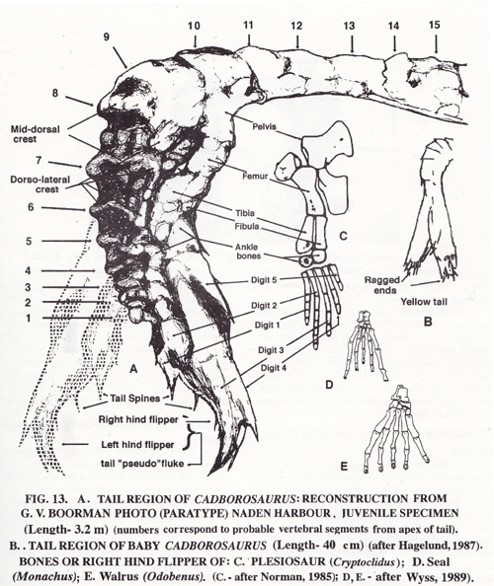
Furthermore, their argument that the fluke-like part of the carcass is a hindlimb (specifically, from the carcass’s right side) is contingent on their argument that an identical structure was present on the carcass’s left but was missing when the carcass was photographed...
Why should we accept that interpretation? It’s not all clear or obvious that this was the case: I’m more inclined to think that the fluke was a midline structure, not one of a pair...
In short, this whole ‘it has modified hindlimbs which can be likened to those of #plesiosaurs’ argument is shot full of logical inconsistencies, factual errors and strange, embarrassing mistakes, and makes the study look like a bit of a farce...
The key thing about the 1995 monograph isn’t just that Bousfield and LeBlond used it to push their idea of Caddy being (a) real and (b) a living plesiosaur; it was also a vehicle for the publication of a formal scientific name for the creature…
They named it Cadborosaurus willsi Bousfield and LeBlond, 1995, the ‘willsi’ honouring Archie Wills, discussed earlier. Yes, they thought that the newspaperman who made the name #Cadborosaurus famous should be honoured for his prescience… 
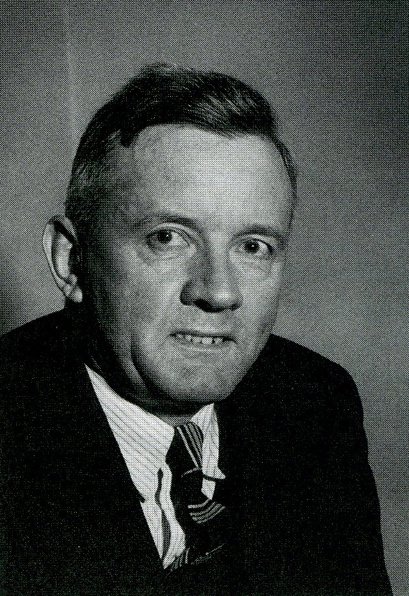
As we’ve seen already in this thread, the carcass itself is of unknown whereabouts. There is no survival physical specimen. So how could Bousfield and LeBlond justify this name in the absence of what biologists call a Type Specimen?
They argued that the PHOTOS should serve this role, and identified the best Boorman photo as a holotype; the second Boorman photo and the Hubard photos were identified as paratypes (a paratype provides additional material relative to the holotype, bolstering its validity)… 

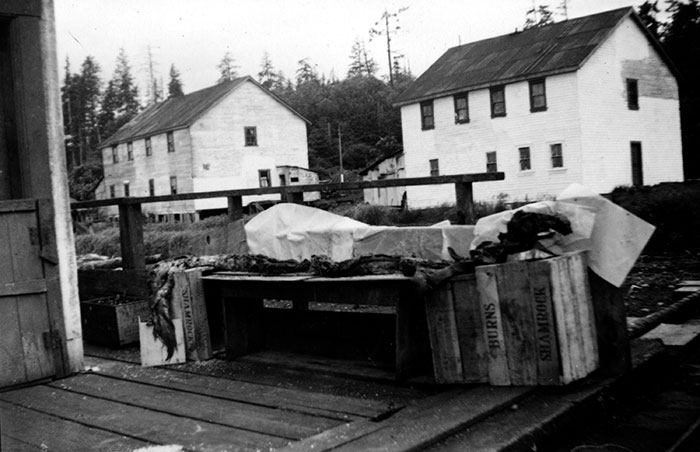

Cryptozoologists have argued on several occasions that we should, in an ideal world, do away with the idea that physical type specimens are needed for a species to be named (Bernard Heuvelmans – ‘father of cryptozoology’ – was particularly big on this idea)...
After all, they want scientific recognition for key cryptids such that their existence is made official and more mainstream…
The debate as to whether physical specimens are NEEDED as holotypes is not, in fact, exclusive to #cryptozoology, and biologists of all sorts are still arguing about it…
In cases – like, when an organisms appears critically endangered – I can understand that the ‘collection’ of a holotype (shorthand for killing it) is undesirable...
But in a case like this – where we’re so, so, so, so far from being sure that the animal is real in the first place – I’d argue that a physical holotype is a requirement...
Photos – especially old, black and white, less-than-ideal photos prone to pareidolia from the 1930s – simply don’t cut it when it comes to cryptids…
And there ends SOME of my main criticisms of the Bousfield and LeBlond 1995 monograph. I could say a lot more (I haven’t discussed their behavioural and ecological speculations, nor their take on the Hagelund ‘baby Caddy’…)… #cryptozoology 

Their naming of the species is incredibly dodgy, their interpretation of it as a living plesiosaur is very, very odd and based on special pleading and a litany of mistakes and assumptions...
.... and their claims about specific aspects of the putative animal’s anatomy don’t withstand the most cursory of examinations…
How on earth did this disappointingly weak study make it through review? Yes, it was reviewed. In fact, they listed five reviewers, among which were palaeontologists Dale Russell and Chris McGowan. Wow, this does not reflect well on them… (Dale died last year)…
As mentioned earlier in this thread, the content you’ve seen discussed here was the subject of extensive discussion on the internet message boards and mailing lists that were the main arenas of discussion back in the 1990s and early 2000s…
I shared my thoughts on the study in 1999 – and then discovered immediately afterwards that a technical paper, written by qualified biologists Aaron Bauer and Anthony Russell...
.... (both known for their contributions to technical zoology; Bauer in particular is a world experts on gecko biology), had been published in the journal Cryptozoology, specifically in response to Bousfield and LeBlond 1995… 

Because the journal Cryptozoology – and the International Society of Cryptozoology itself – was undergoing something of a crisis at the time (it was dying, basically), the publication of Bauer and Russell’s response article was a bit delayed...
It’s generally cited as 1996, but I wonder if it was published later – I personally wasn’t aware of it until 1999...
Anyway, this paper covers many of the same issues I’d pointed to, even noting that Bousfield and LeBlond had, variously, been utterly wrong and hilariously wrong in labelling plesiosaur paddles and so on…
I get the impression that Bauer and Russell (1996) had been submitted for publication in Amphipacifica, but rejected or ignored. Incidentally, I happen to know that the #Cadborosaurus monograph itself had been submitted for publication in Cryptozoology, but rejected…
What was the response from Bousfield and LeBlond on these offensives? The Bauer and Russell paper didn’t evoke any published response...
.... which was surprising, since working scientists expect (or should expect) remarkable claims to be met with appropriate scepticism and, if appropriate, challenge and pushback...
Actually, cryptozoologist John Kirk (very much on the side of researchers like Bousfield and LeBlond) said in 2000 that he’d seen a refutation of the Bauer and Russell paper from LeBlond – but I guess it was never finished or published, perhaps because of the ISC’s death…
Kirk also kindly (ahem) forwarded my online writings about the Bousfield and LeBlond monograph to Bousfield and LeBlond themselves. Ed wasn’t happy with my negative take on his work and also noted his dislike of Bauer and Russell’s critique…
He objected strongly to my characterisation of #Cadborosaurus as a ‘living plesiosaur’, his argument being (to paraphrase, not quote) “that’s not what we said!”…
But it _IS_ what they said: their 1995 monograph is shot through with stuff positing a plesiosaurian identity for #Cadborosaurus – it’s their primary contention! (well, that and the fact that Cadborosaurus exists in the first place)… 


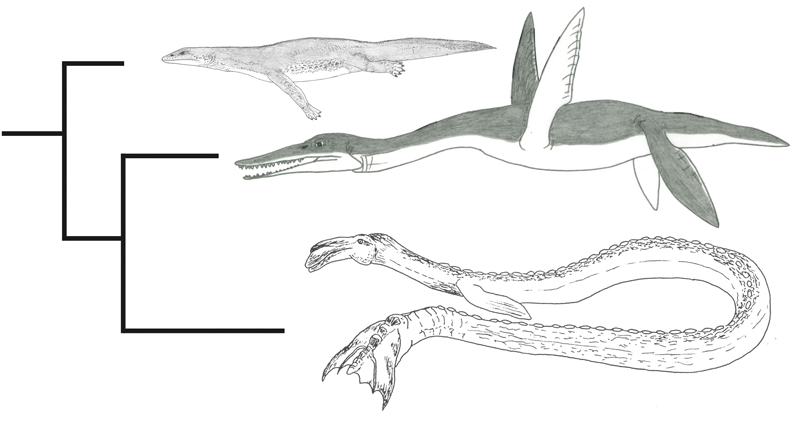


I also have to add, sadly, that Ed’s response (and subsequent communications) included misplaced attacks on myself and my colleagues whereby we were characterized as Ivory Tower elitist gatekeepers, punching down and squandering our big piles of science dollars…
Our 1st communication of 1999 includes this gem: “Isn’t it about time that the scientific community, with its high-tech resources and significant funding [sic], made a more realistic contribution (than erudite and often misplaced criticism) to the full solution of this enigma”...
Look, it’s true that some scientists are immensely privileged, wealthy individuals with access to large quantities of funding. But, for god’s sake, the very opposite is true for the majority of them, especially those in zoology and allied disciplines…
I guess it didn’t occur to Ed that I was a Masters student at the time he saw my criticism of his work; that I was only able to do the academic work I was due to a bursary, _and_ was doing all my work unfunded...
My track record as a writer and researcher also shows that I’m the very opposite of an ivory tower elitist or a gatekeeper…
So, in case it’s not obvious, his comments often rubbed me up the wrong way; they seemed more akin to the rantings of True-Believer #cryptozoology fans than the experienced, respected, veteran scientist he was…
Anyway, I never published a paper dedicated to #Cadborosaurus, but I did publish a take on events in my 2000 sea monster article in @forteantimes... 



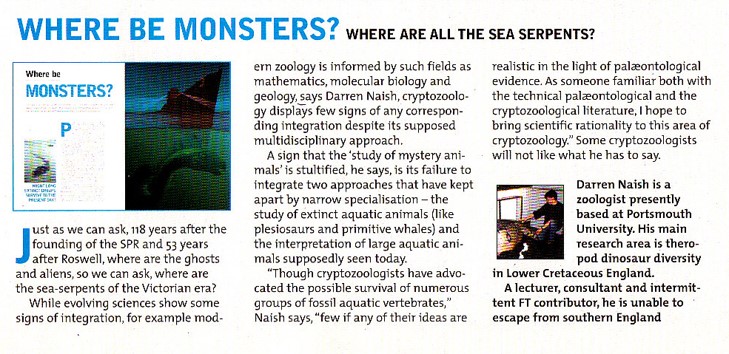
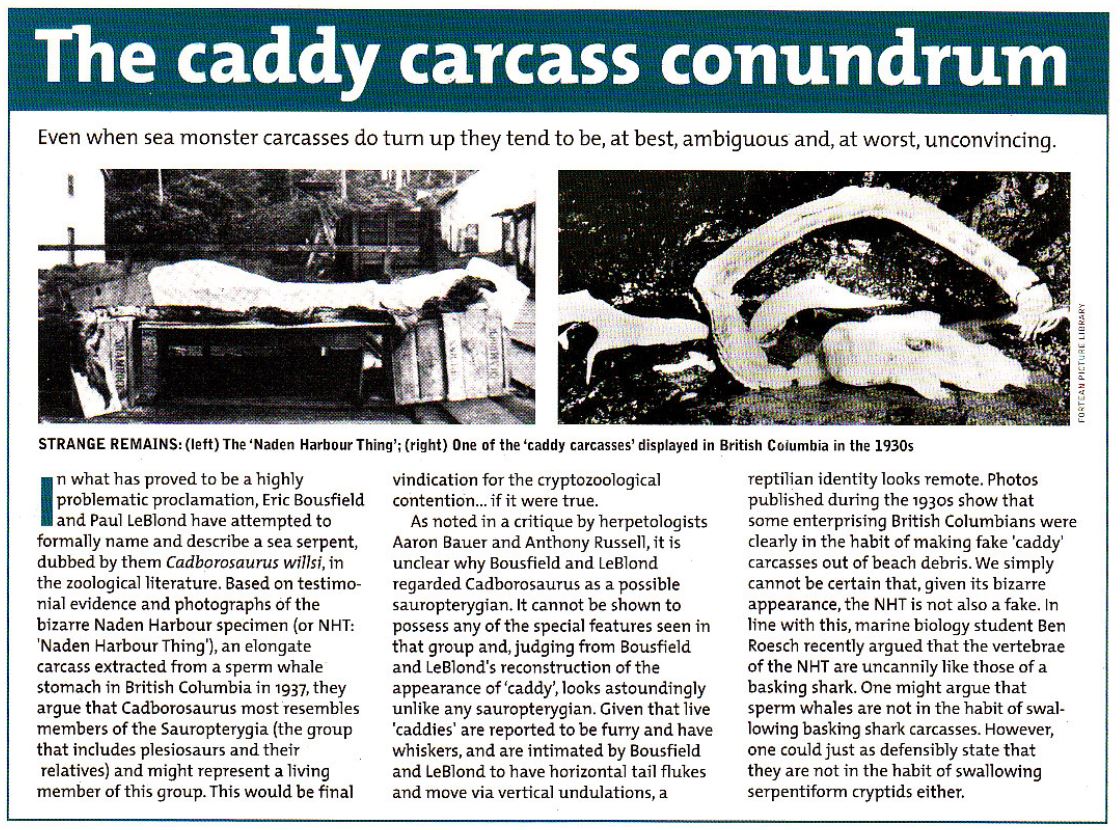
I was kinder in those articles about the Naden Harbour carcass than I am today, implying that it _might_ really be the carcass of “highly unusual, apparently new type of vertebrate animal”. But…
I also said that the Naden Harbour carcass should be seen within the following context: those photos were taken at a time when Caddy was seen as both a local sensation and as a bit of a joke in the media, AND when people were – I contend – faking Caddy carcasses…
Exhibit B here (the Naden Harbour carcass has to be Exhibit A) is the Camp Fircom carcass, another ‘Caddy carcass’ from British Columbia, supposedly found on the beach at Camp Fircom in October 1936… #Cadborosaurus 


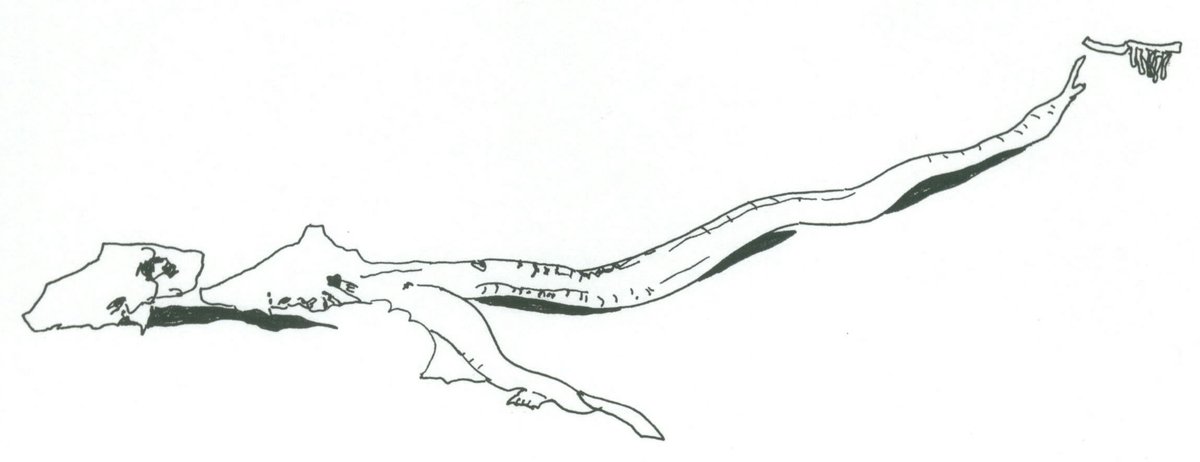
So far as I can tell from information online today, Camp Fircom is a church-owned camp-ground on the south-east side of Gambier Island, near Vancouver. The name seems specifically associated with the camping site... 
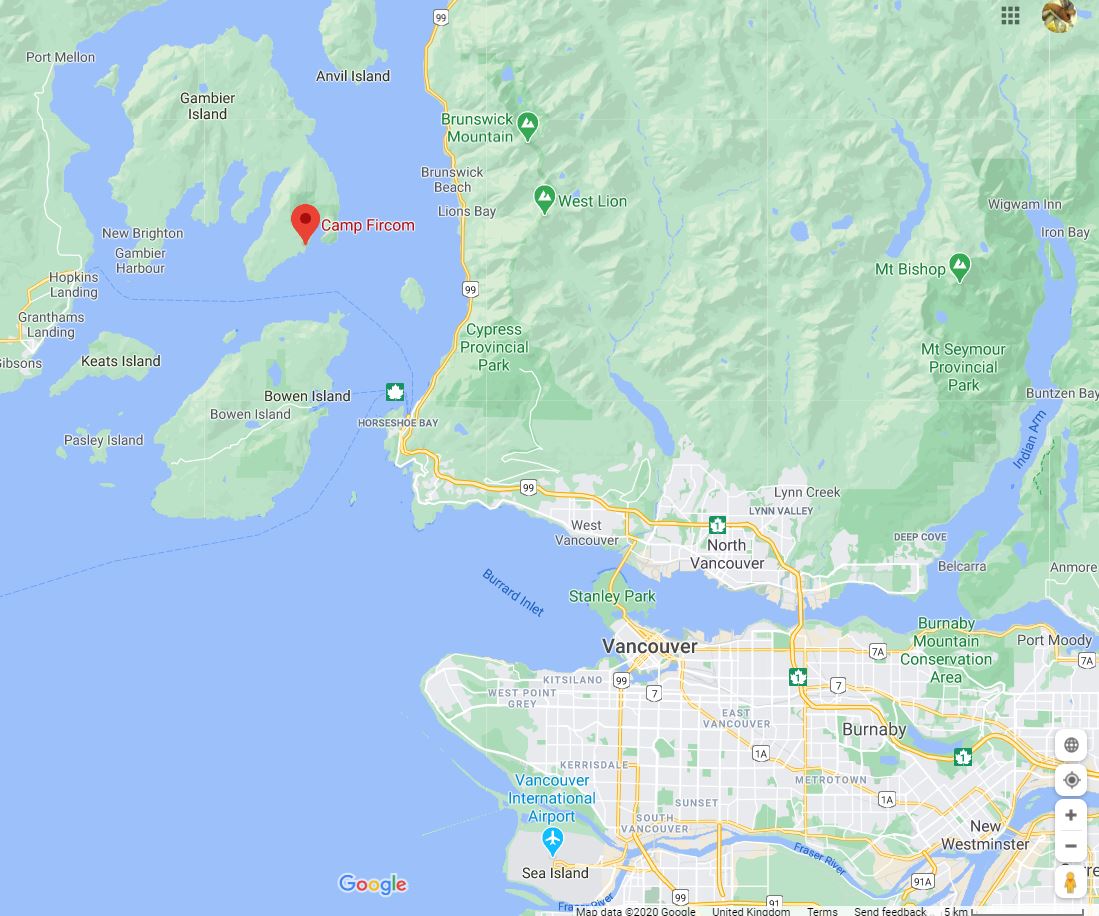
Anyway, I first became aware of this object thanks to Karl Shuker’s coverage of it in his 1996 book The UneXplained (clearly published to take advantage of the popularity of The X Files)… 

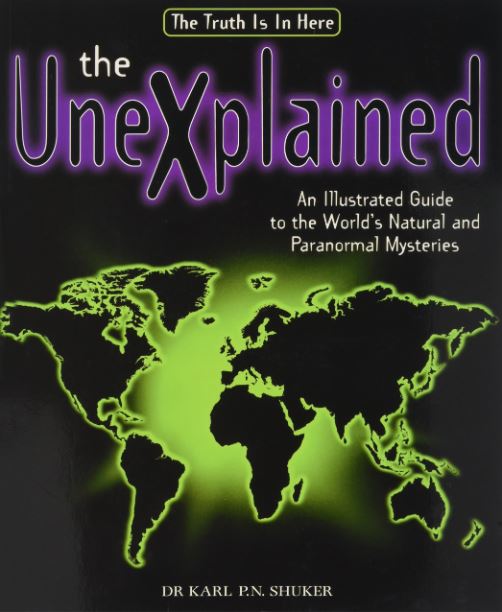

Karl had obtained postcards depicting the object, and I though these significant enough to write up in a short paper. You see, I don’t think the Camp Fircom carcass is a real carcass at all… #Cadborosaurus #cryptozoology 
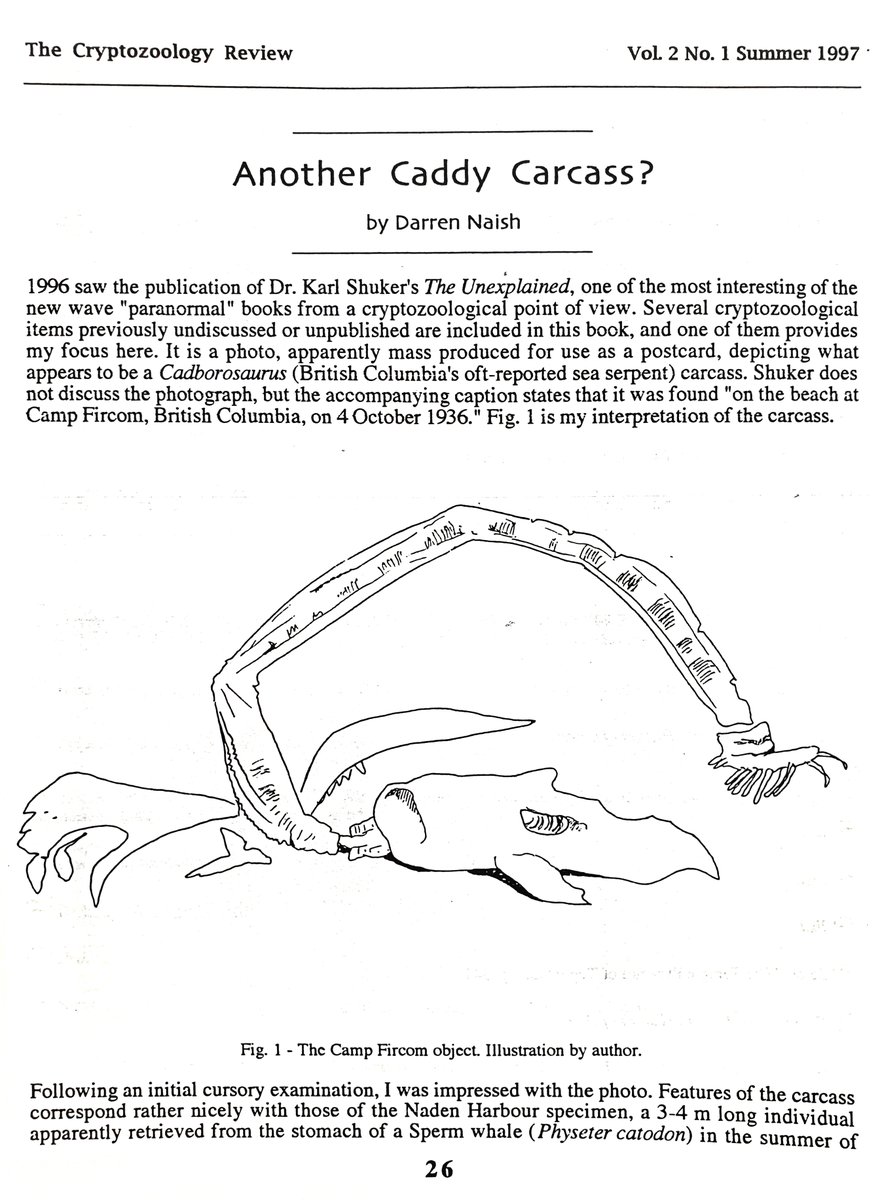
In fact, I’m pretty confident that – to quote myself in the 1997 paper I published on it (which I really should make available as a pdf) – it’s a “montage of beach debris”…
I think that the body is a plant stem (probably kelp), the skull is a rock (perhaps with a bivalve shell serving as a pretend eye), and that the forelimbs (which might also be plant parts) have no connection to the rest of the object and have merely been conveniently placed…
Karl Shuker (on the right) treated my idea with a fair and appropriate quantity of scepticism and suggested alternative identifications for parts of the object (his notes in red), but on balance I still think I’m right and that the Camp Fircom object isn’t a carcass at all…. 


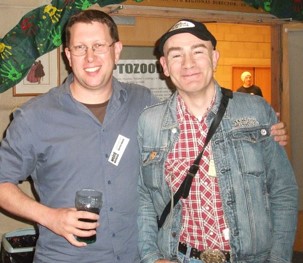
Which is interesting, because here’s direct evidence that people in British Columbia were in the habit of making fake ‘Caddy carcasses’ in or around 1936. In my view, this weakens the idea that the Naden Harbour carcass might be real…
I’ve been told (specifically, by Ed Bousfield) that this is irrelevant and has no bearing on the Naden Harbour case. I don’t agree...
I think it hints at the fact that people in the area were, during the early 1930s at least, seeing snaky marine objects and thinking “ha ha, this could be another Caddy”…
Transfer that to the Naden Harbour carcass, and it raises the possibility either that the carcass was a deliberate hoax (the crew at the whaling station saw a long, snaky object and sought to make it into ‘a Caddy’)… 


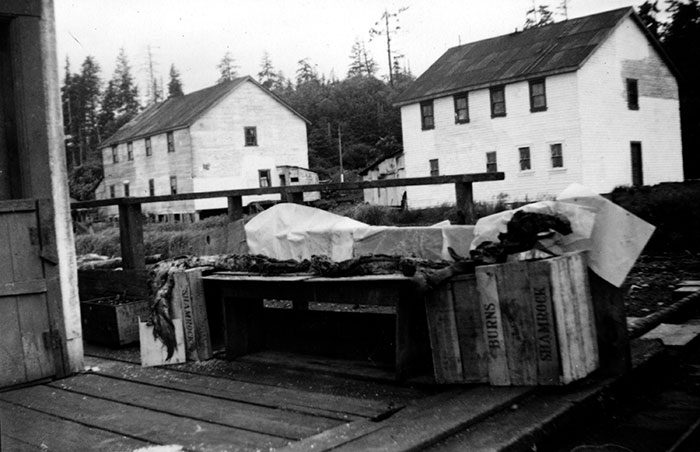
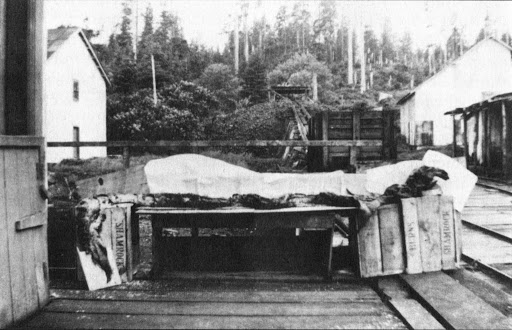
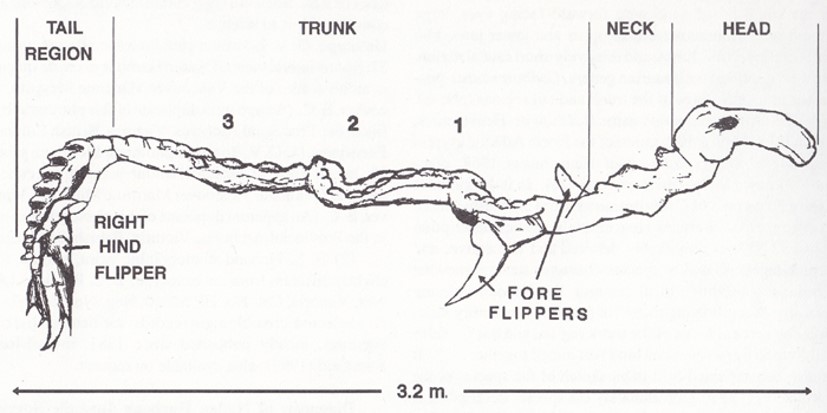
… or that the crew saw a long, snaky object and – influenced by the expectations and news of the time – immediately imagined that a Caddy carcass is what it must surely be…
It’s true that this idea is contingent on me being right about the Camp Fircom object being a ‘fake’. I think I’m right; I really can’t see the object as anything other than an assemblage of coastal bits and pieces...
But as usual with these historical photos, it’s a hypothesis and there’s no way of testing it directly...
To bring this back to the Naden Harbour carcass, what could it have been if Bousfield and LeBlond’s claims about it being a modern-day serpentine plesiosaur were wrong (as I think they surely were, and are)? 

This topic saw repeated discussion on the internet discussion groups of the 1990s and early 2000s mentioned earlier, some claiming that it could be identified as the carcass of an unknown animal, others that it couldn’t be matched with a known species…
Ben Speers-Roesch (today, a qualified marine biologist, but back then an amateur cryptozoologist who edited a desktop cryptozoology journal, The Cryptozoology Review) argued in 2000 that it was a misidentified Basking shark carcass…
As you’ll know if you’re at all familiar with stories about sea monster carcasses (or recall my treatment of the 1977 Zuiyo-maru case, covered here:
https://twitter.com/TetZoo/status/1312835370543976449), the remains of ‘sea monsters’ have, time and time again, turned out to be Basking shark carcasses...
In the case of the Naden Harbour carcass, Ben argued that the body segments of the carcass corresponded well to shark vertebrae, and that both the head and tail could be interpreted as those of a mangled shark if imagined as twisted and distorted…
Of additional relevance is that Basking shark carcasses have – on one or two occasions – been discovered in Sperm whale stomachs, so there is a precedent for the situation reported from Naden Harbour…
I don’t think Ben’s idea is that bad, and maybe it’s correct. But I don’t see it as especially convincing, since the diagnostic anatomical traits I’d like to see in the photos (concerning key details of the skull or vertebrae) aren’t obvious to me, nor indeed visible at all...
I think there’s another possibility worth considering, which I don’t regard as a slam dunk either, but as at least worth considering…
A few years ago I learnt that sturgeons have a rectangular, gently curved neurocranium that has a squared-off anterior end. None of this is obvious in the live animal, by the way: you can only see it in skeletonised remains. Scott Mardis produced this composite… 

This got me wondering: could the Naden Harbour carcass be the remains of a sturgeon? Sturgeons have a heterocercal tail (that is, where the dorsal lobe is bigger than the lower one), and it _could be_ that the ragged tail of the Naden Harbour carcass conforms to the dorsal lobe…
Sturgeons also have a row of dorsal scutes along the top of the body; perhaps this explains that line of oval knobs visible along the length of the Naden Harbour carcass… #Cadborosaurus #cryptozoology #seamonsters 
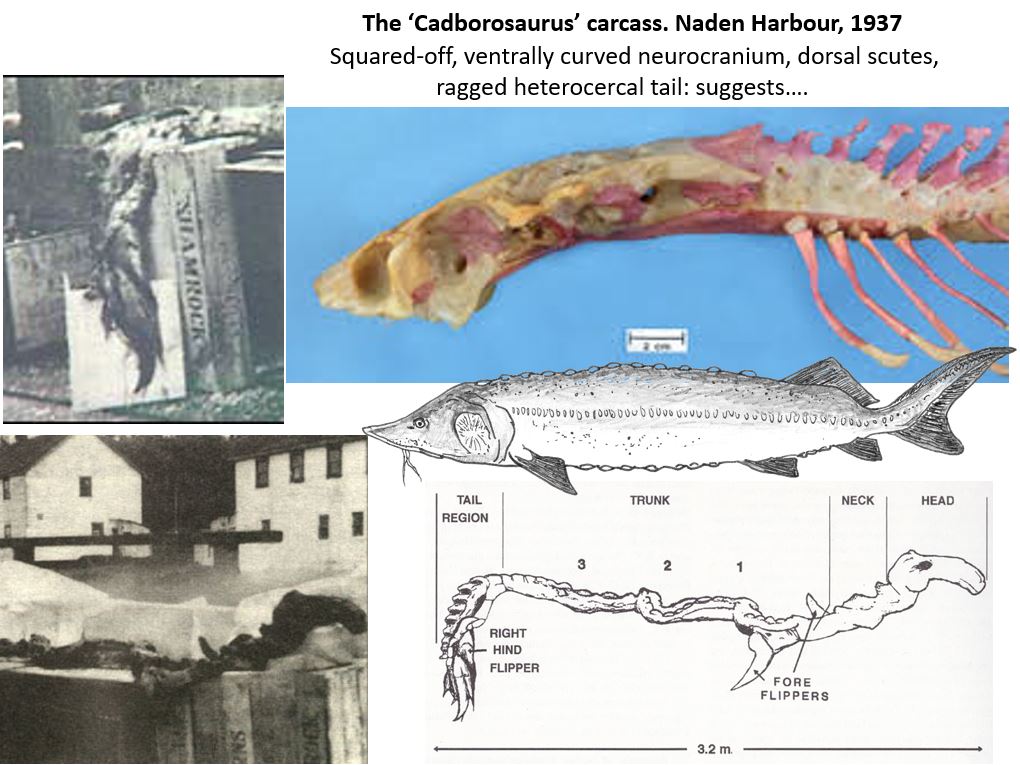
What about distribution? The White sturgeon (Acipenser transmontanus) occurs in the British Columbia region, where it’s anadromous (meaning that it migrates into freshwater to breed) and occurs in estuaries and other marine places during part of the year…
Theoretically, a dead one could get washed out to sea at any time of year. It matches anatomically with the description above, and overlaps with the Naden Harbour carcass in size, the record length being over 6m (you’ll recall that the Naden Harbour carcass was about 3.8m long)… 

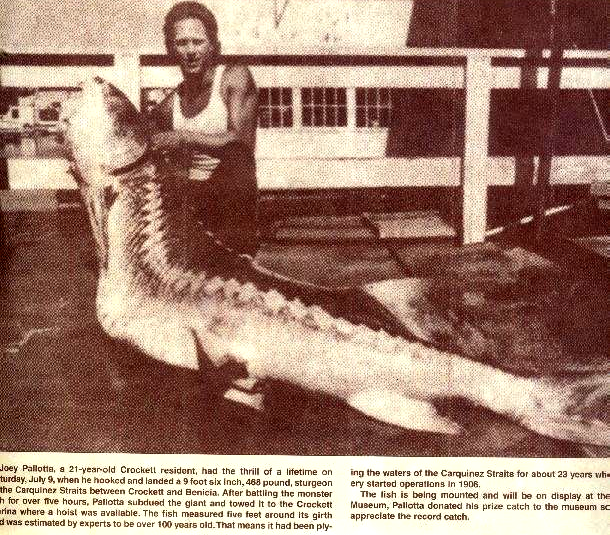
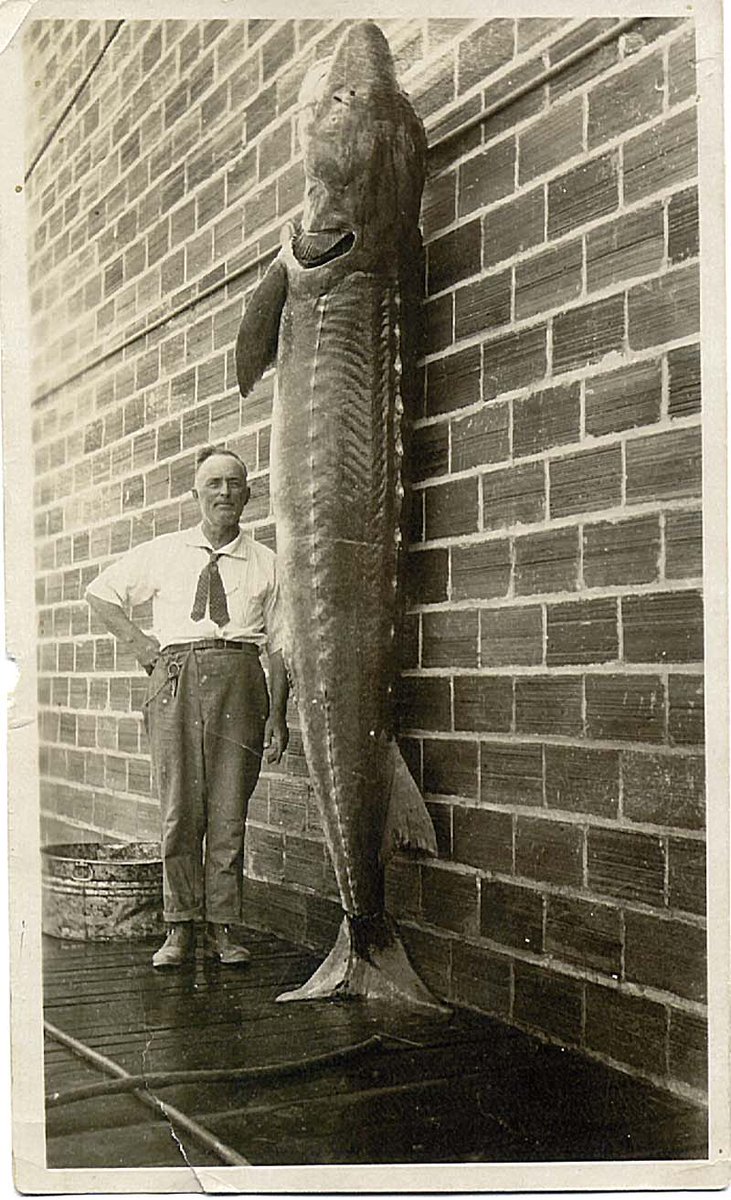
Is, then, the carcass really that of a decomposed sturgeon, possibly one swallowed by a Sperm whale? In the absence of parts of the carcass, we can’t say…
But I put it out there as an idea which is way more likely than the possibility that it was a modern-day serpentine plesiosaur…
The idea was briefly discussed in my 2016 book Hunting Monsters (which is mostly liked by those who advocate a sceptical, science-led view of the world, but has been rounded dissed and disliked by those who think that cryptozoological claims should be accepted without scrutiny)… 

How did Bousfield and LeBlond’s 1995 hypothesis (that Caddy is a post-Cretaceous plesiosaur) fare among those cryptozoologists more inclined to regard Caddy as real?
Bousfield and LeBlond themselves notes that Caddy was probably one and the same as the Merhorse, one of Heuvelmans’s nine sea monsters, interpreted by him as a novel giant pinniped… #cryptozoology #seamonsters 

And the idea that Caddy – if real – might be mammalian rather than plesiosaurian has remained the more ‘mainstream’ take within the cryptozoological community…
… which is pretty funny: Bousfield and LeBlond set out to convince their academic colleagues of their hypothesis, and yet they didn’t even convince their closest allies and supporters…
In one of the most widely consulted books on sea monsters – Karl Shuker’s In Search of Prehistoric Survivors – a basilosaur identity is preferred for Caddy (the idea that basilosaurid whales have survived to the present is a very popular idea in the history of #cryptozoology…)… 
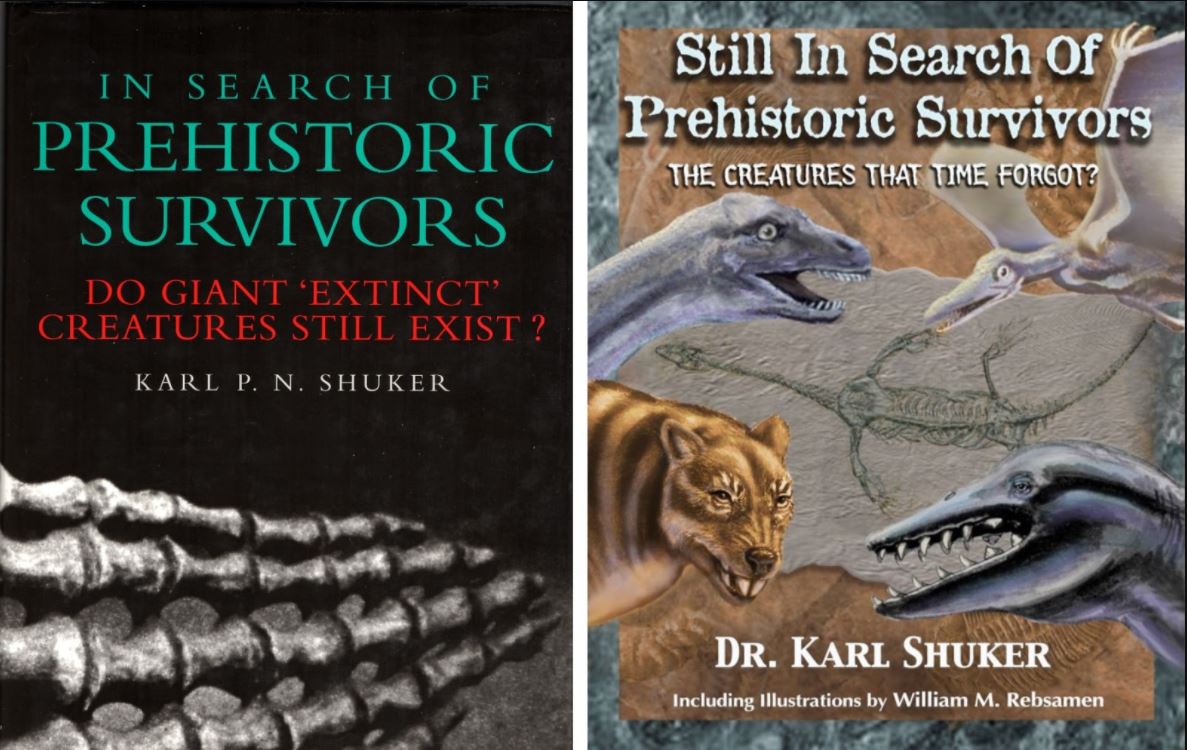
There’s also Pasquale Saggese’s 2005 proposal that Caddy might be a long-necked sirenian. I think this is a non-starter, but it’s a fun example of the SpecBio ‘creature building’ component so prevalent in #cryptozoology… 


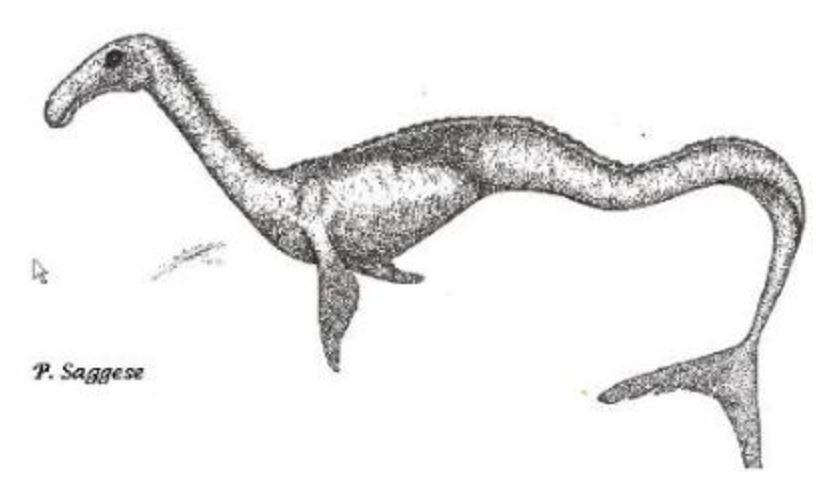
One more issue before I stop. Central to Bousfield and LeBlond’s arguments on the Naden Harbour carcass is that the object represents the same animal that witnesses claimed to see, alive, in the waters off and around British Columbia...
But is there a reason to think this really is the case? If you go through all the alleged Caddy eyewitness accounts (discussed in the 1995 monograph, in LeBlond and Bousfield’s 1995 book, and in LeBlond et al.’s 2014 book), there are lots of discrepancies… 


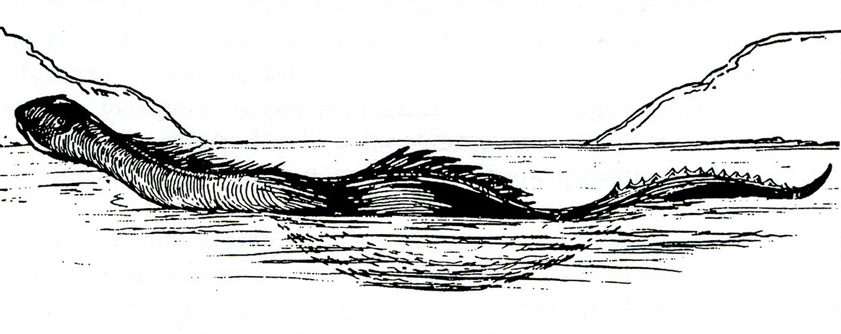


Among those reporting a horse- or camel-like head, for example, there’s mention of ears or horns… which aren’t present on the Naden Harbour carcass… #Cadborosaurus 




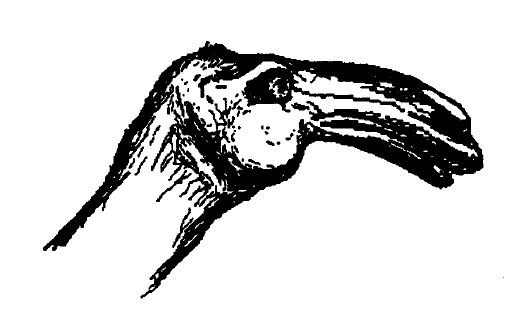
As I noted way earlier in this thread (which might just be the longest of these threads so far…), I think that sightings of live ‘Caddy’ animals actually involve all kinds of things (swimming deer, surfacing elephant seals, whales entangled in debris and so on)...
... and a critical take shows that there’s no reason to mass them all together…
That’s where we’ll end things. There’s much more to the #Cadborosaurus saga, easily enough for a book. In fact two books (shown here) do discuss the creature, but only from the point of view of it being a real marine vertebrate, not from the more critical stance discussed here… 
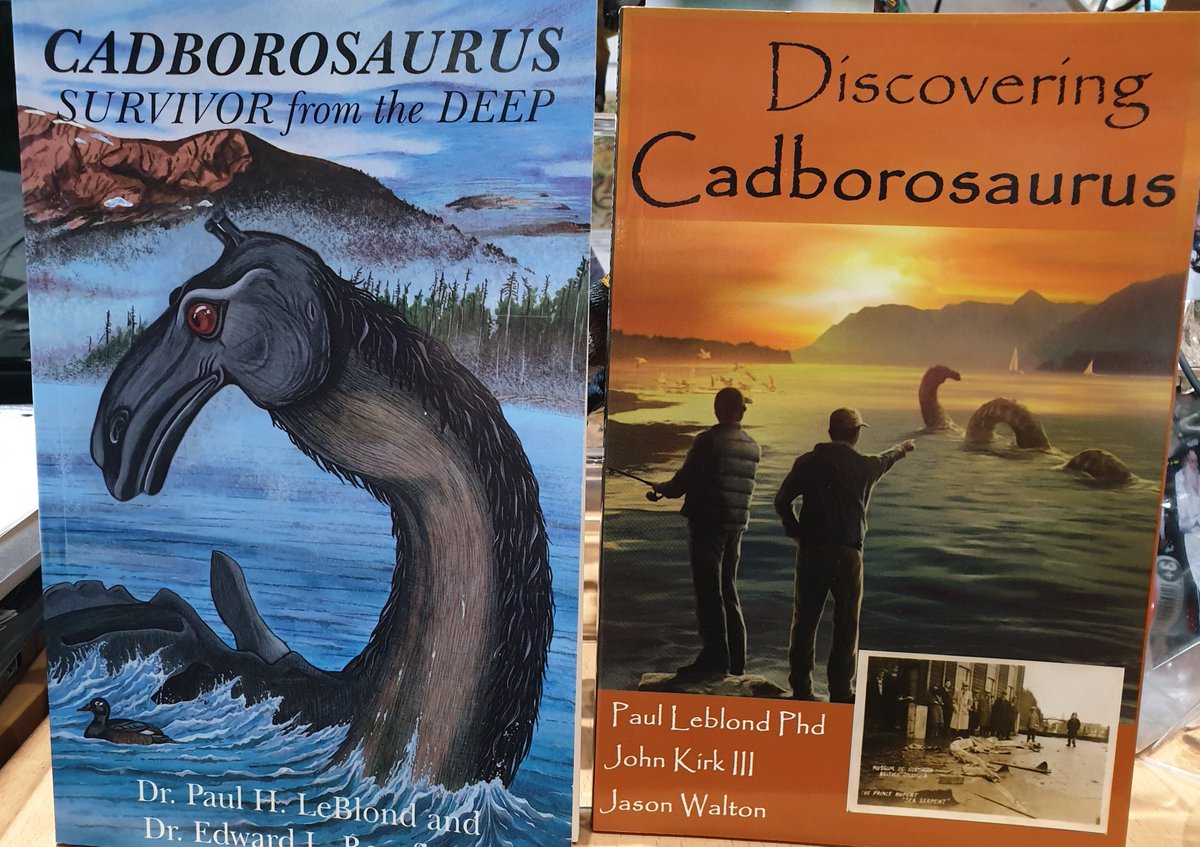
I’ve written about #Cadborosaurus a lot at #TetZoo, but the articles have been corrupted, destroyed or paywalled by the companies hosting those articles, not my fault. It’s partly for that reason that I’ll be publishing a tidied version of the text you’ve read here at #TetZoo…
That’s where we’ll end, thanks for reading. This has been another of my #TetZoocryptomegathread things – there are more to come. Thanks for reading. END 

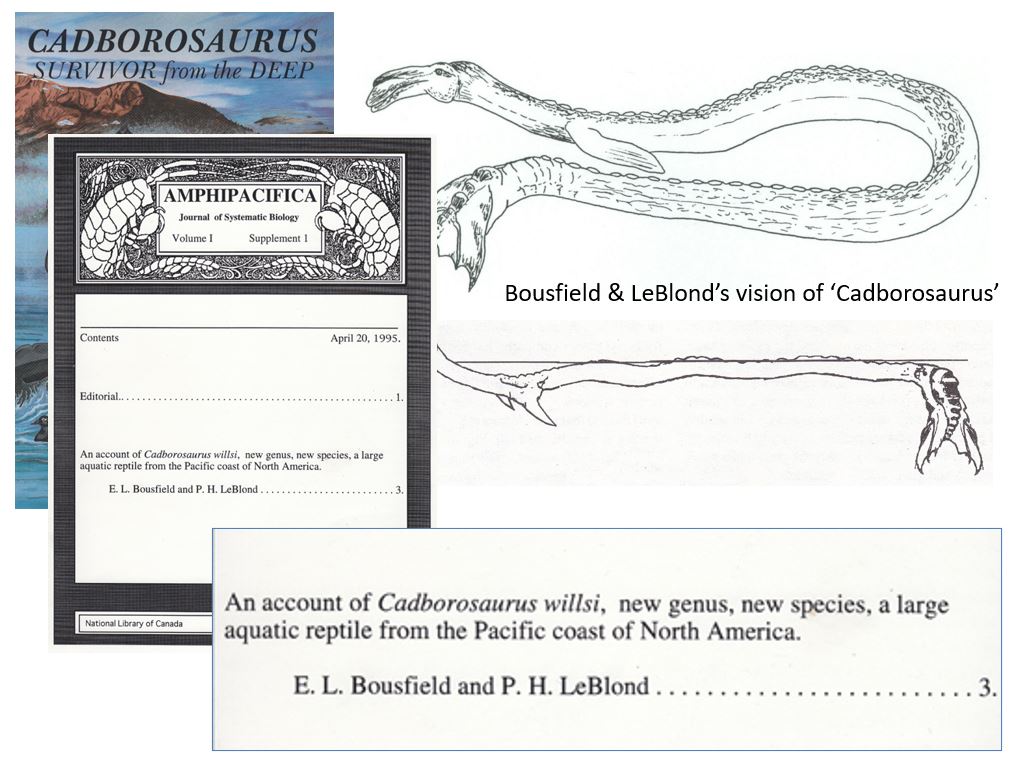

• • •
Missing some Tweet in this thread? You can try to
force a refresh


